


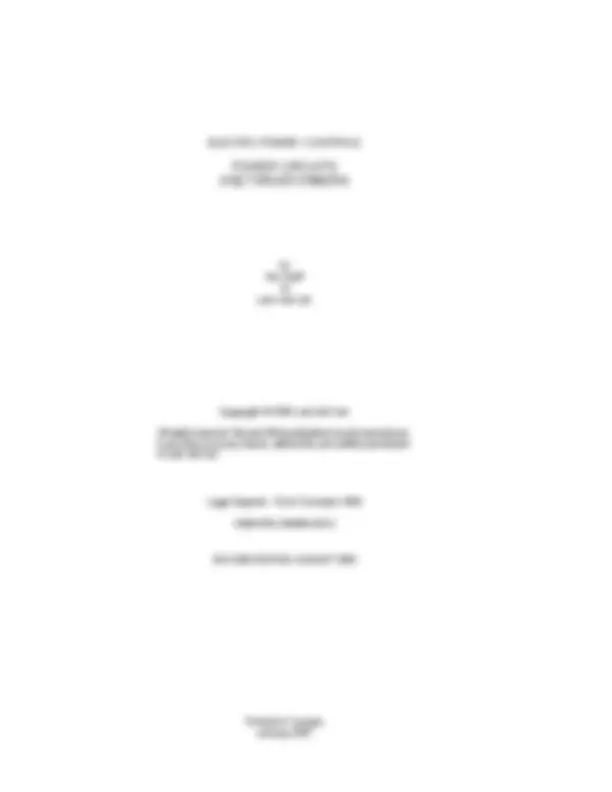
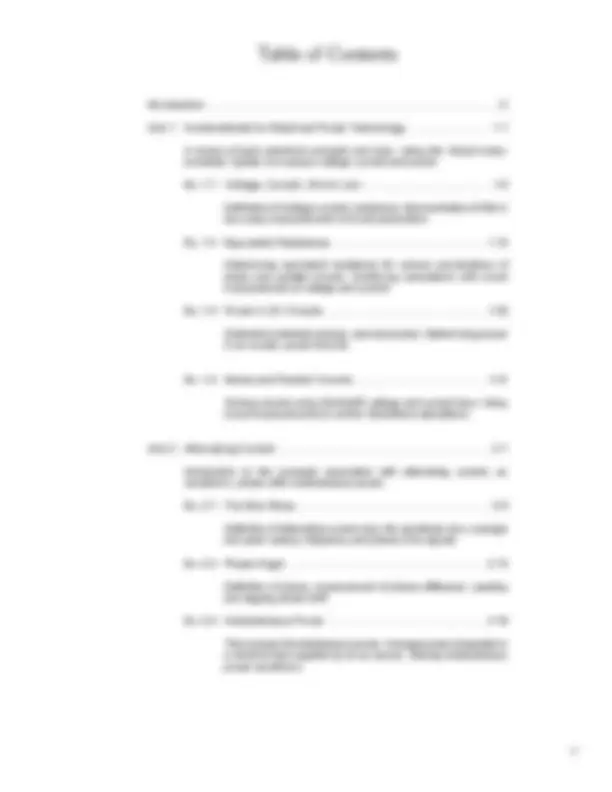
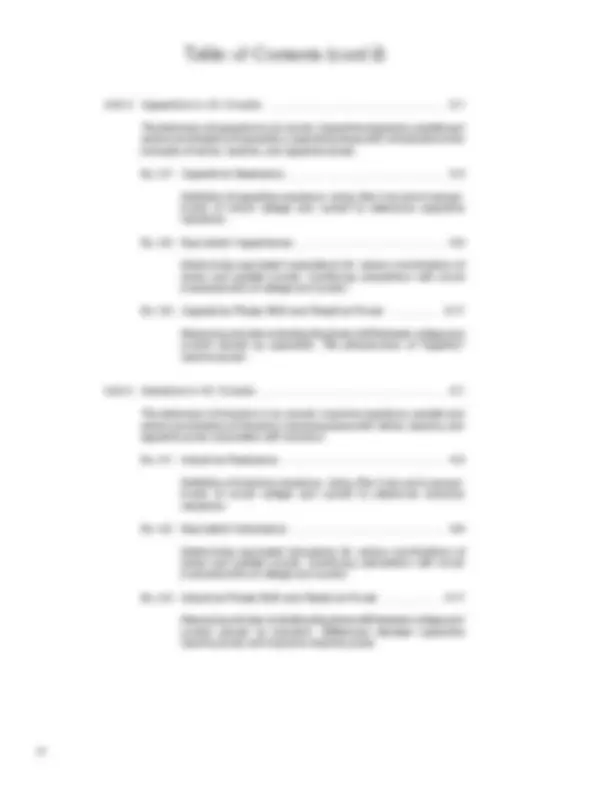
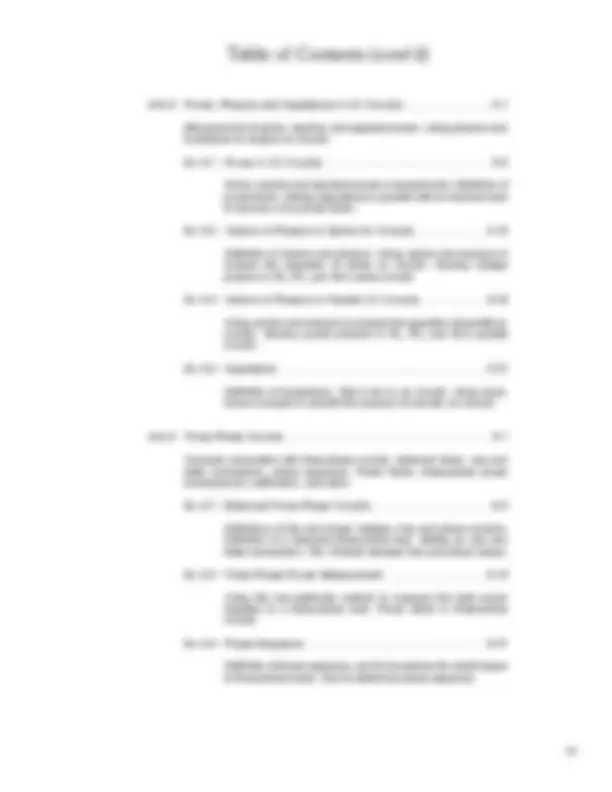

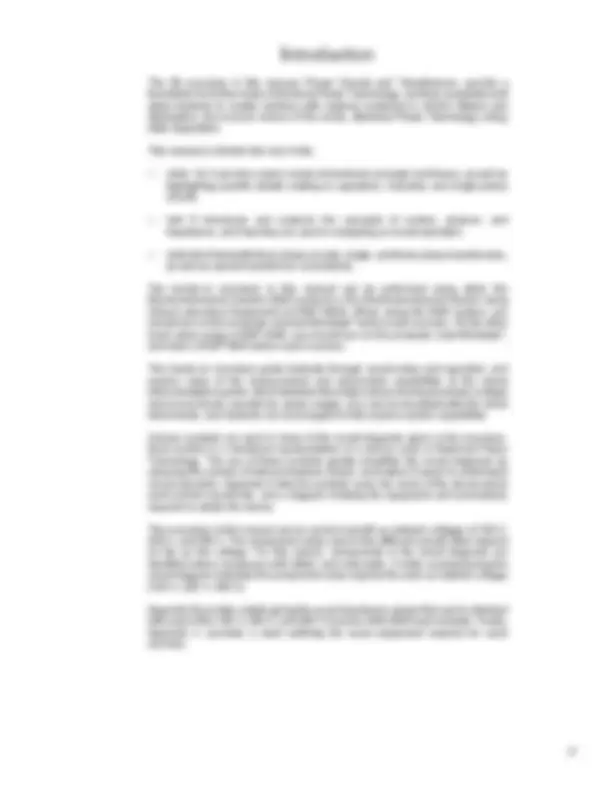

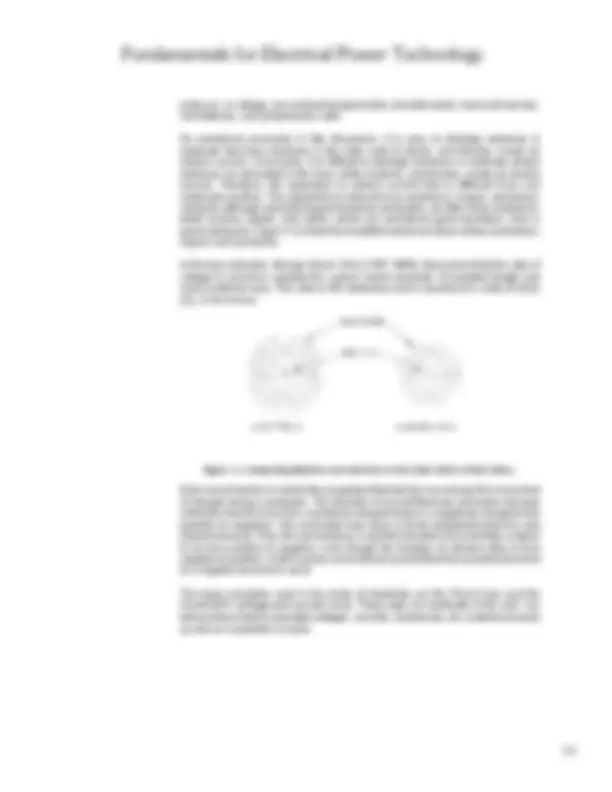

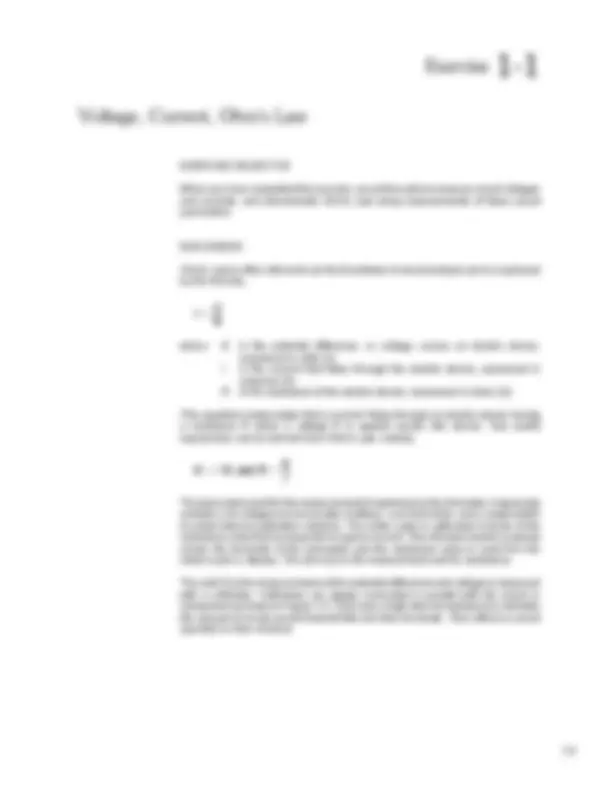
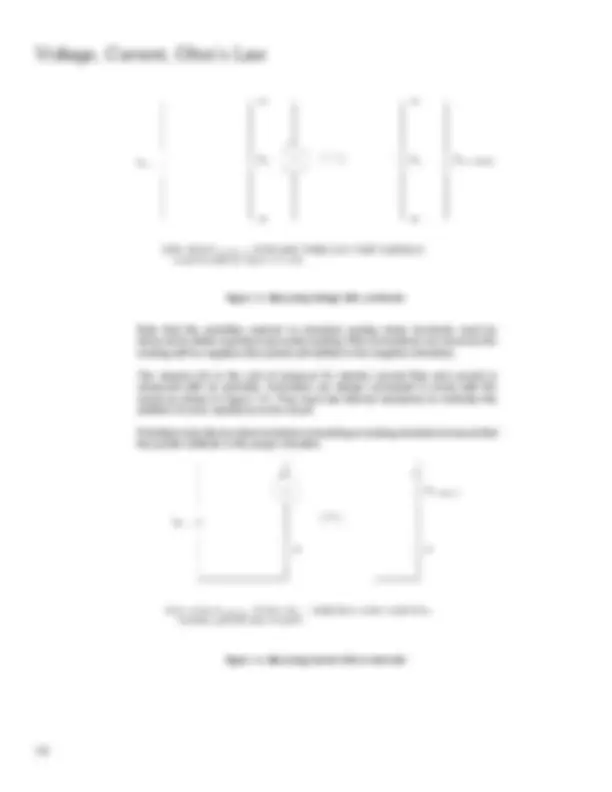
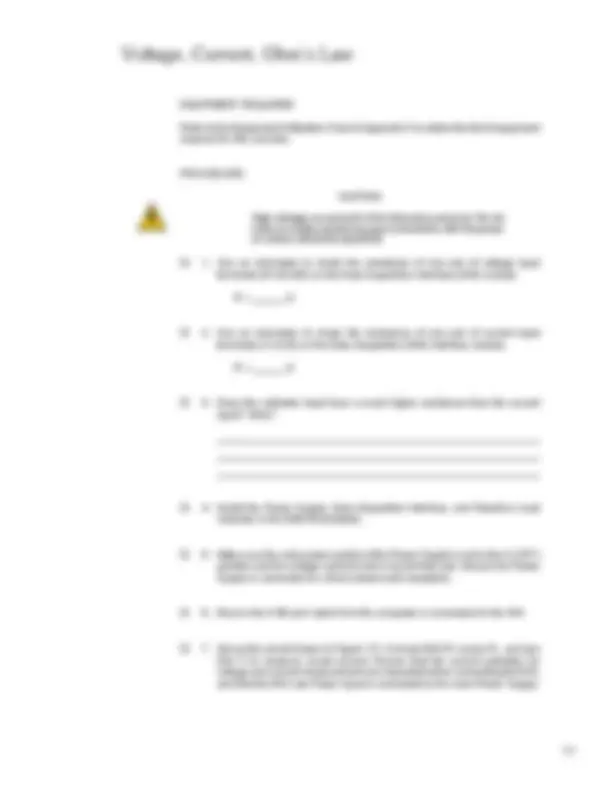
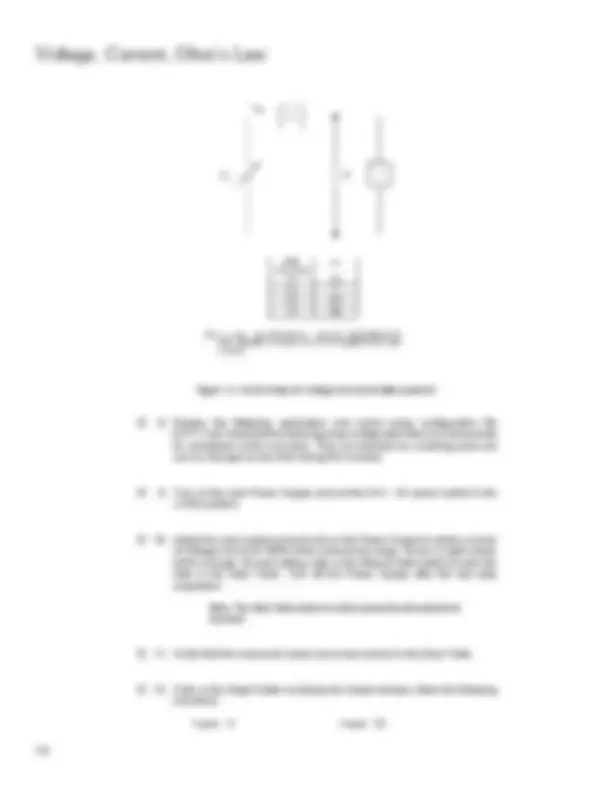
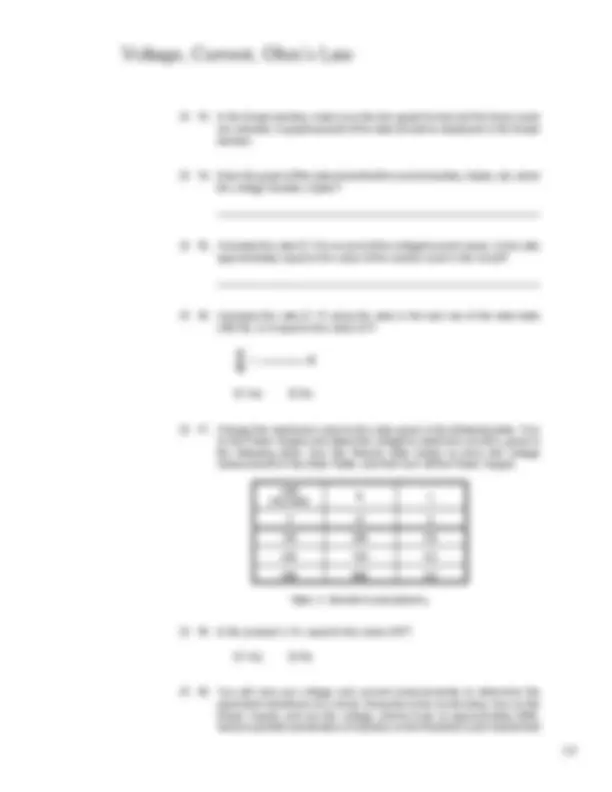
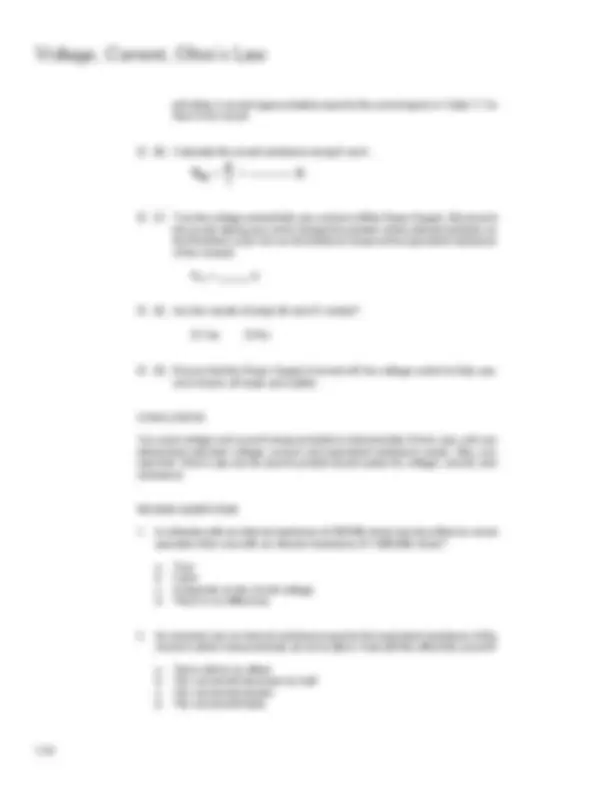
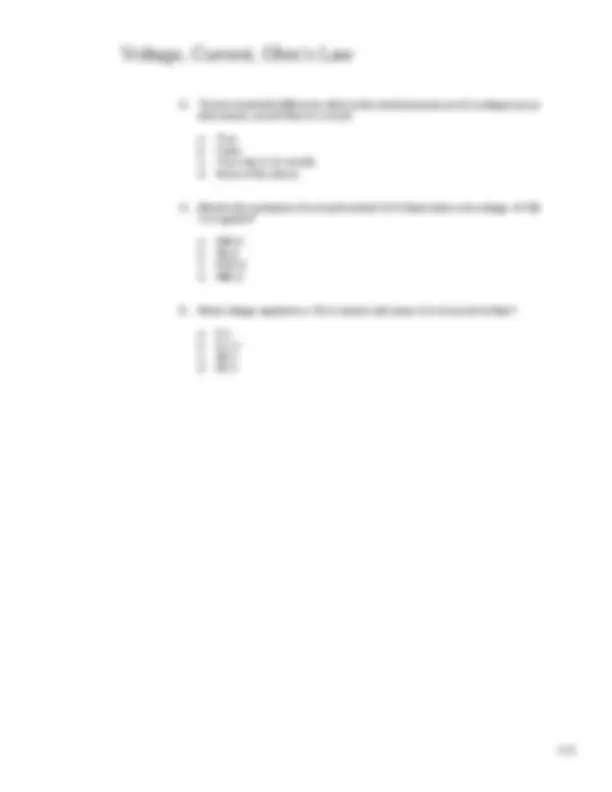

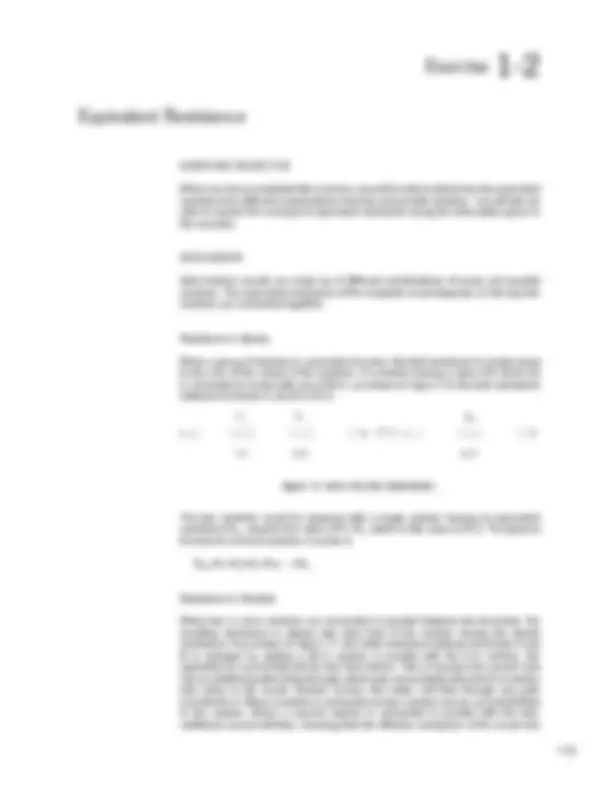
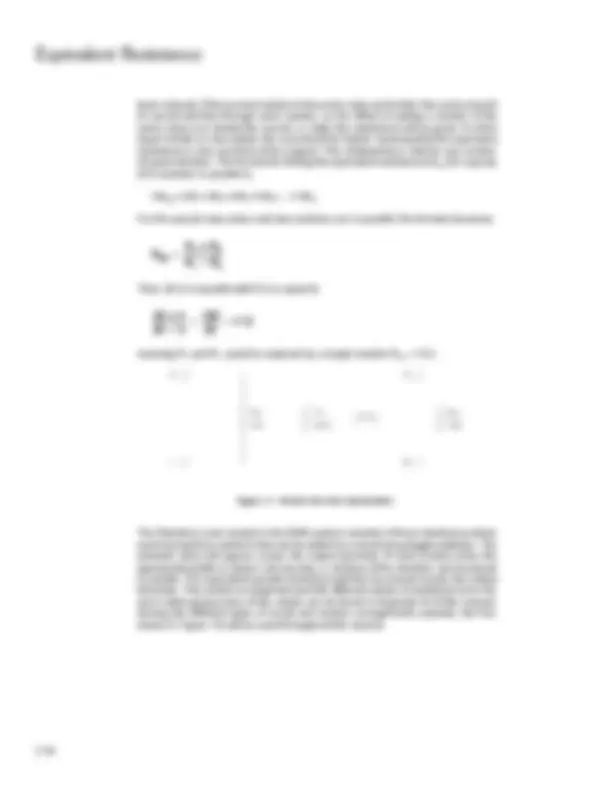
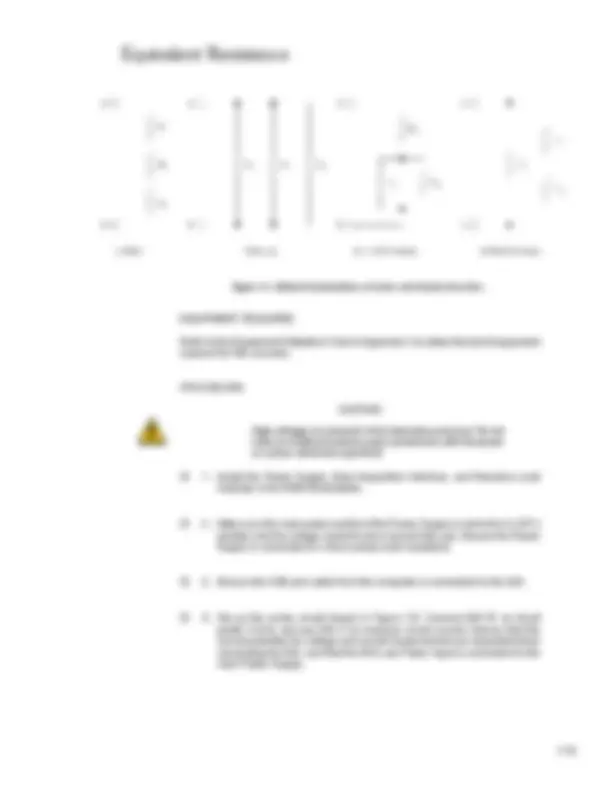
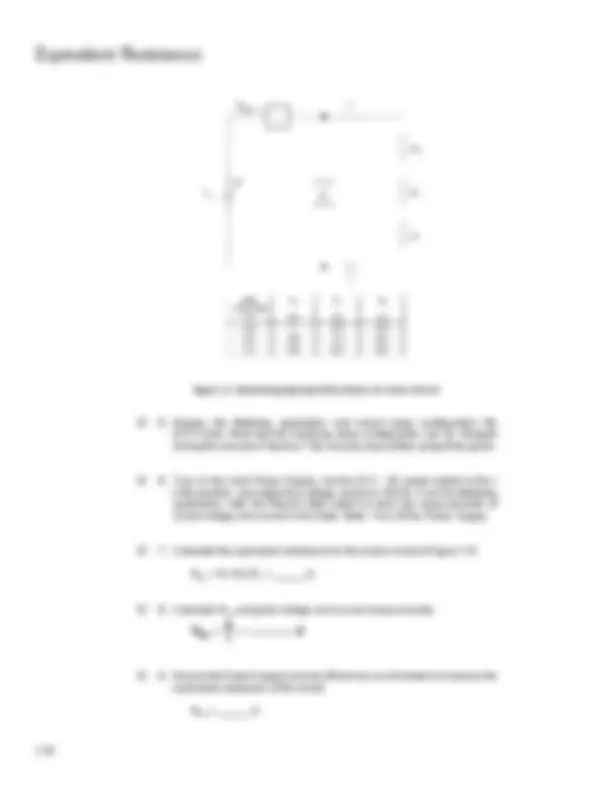
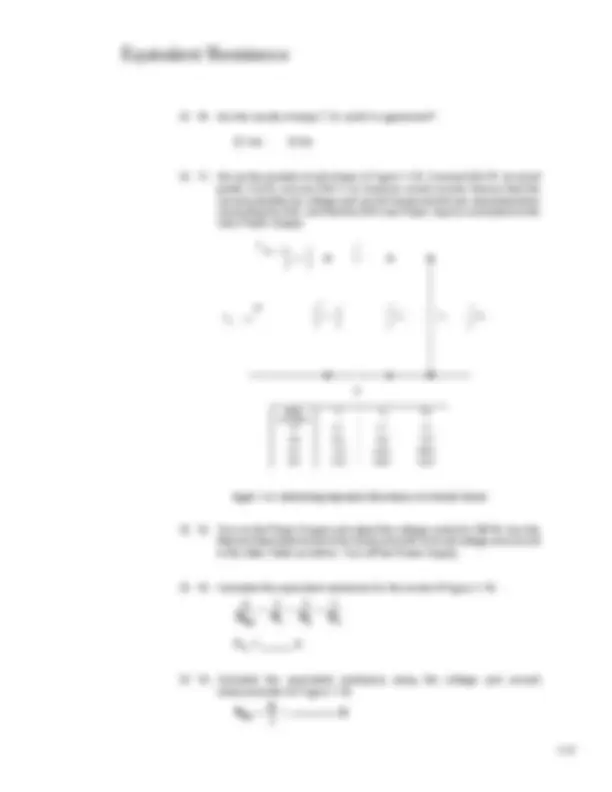
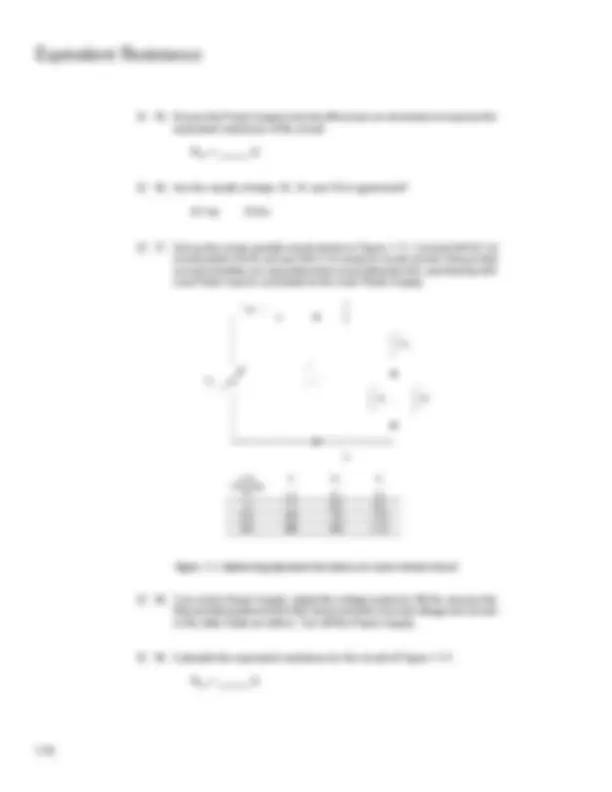
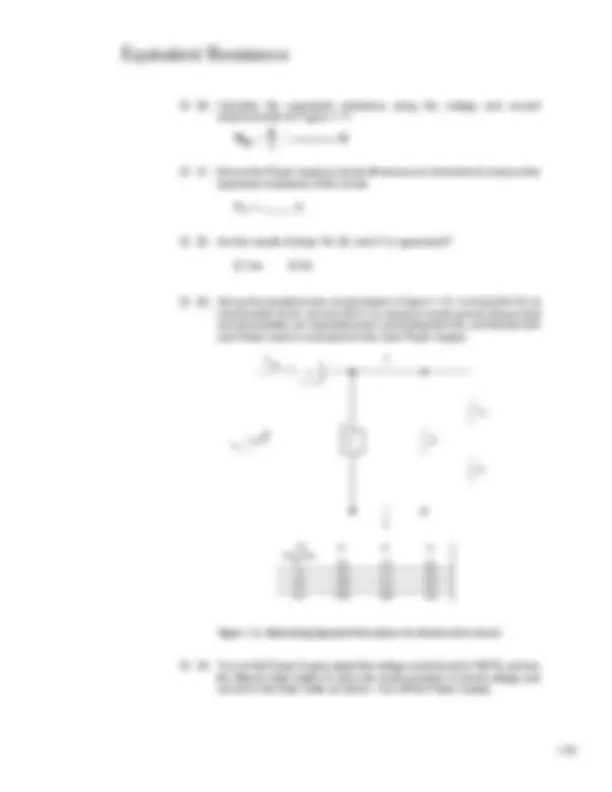
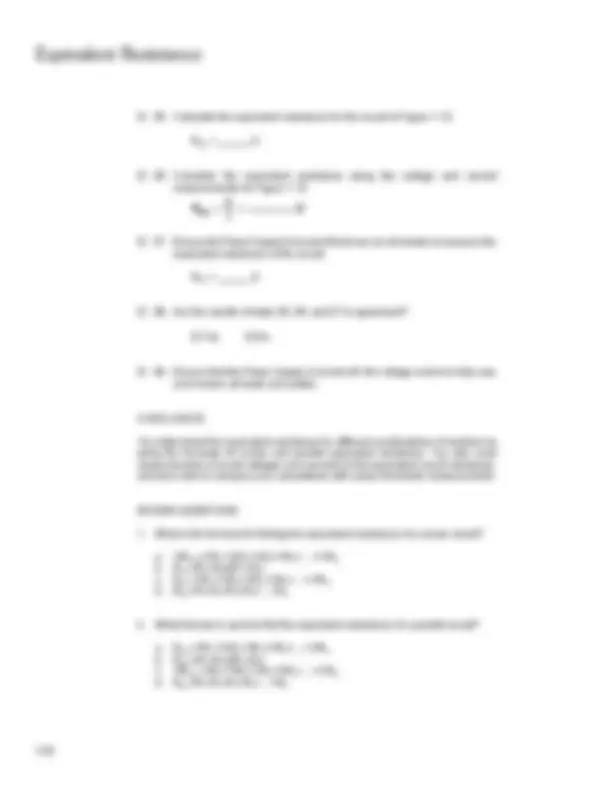
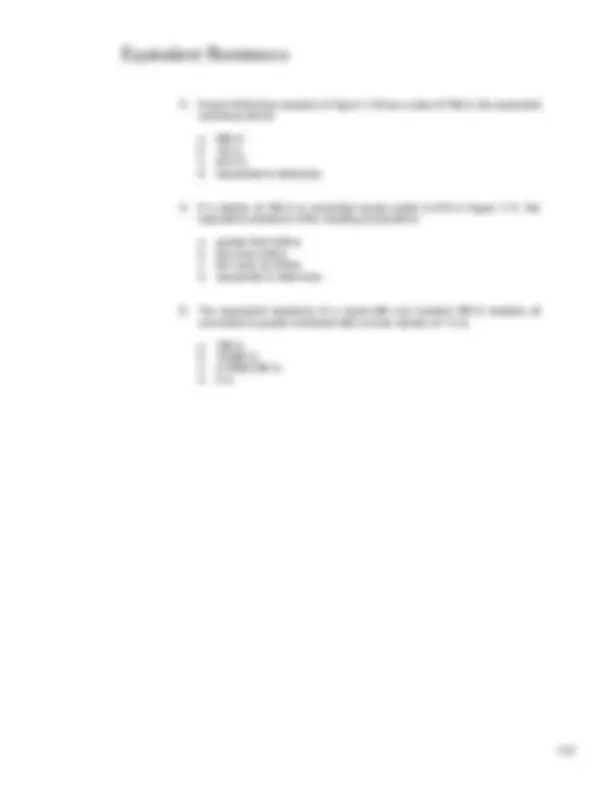

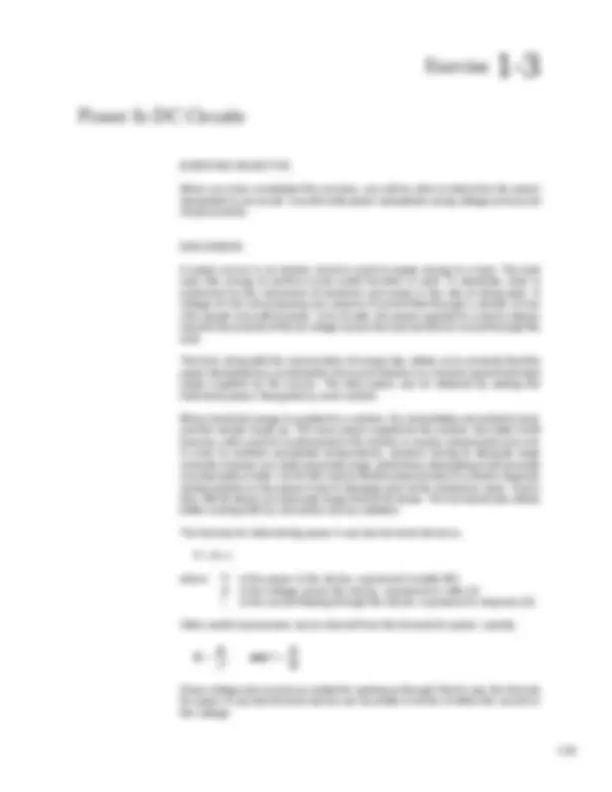
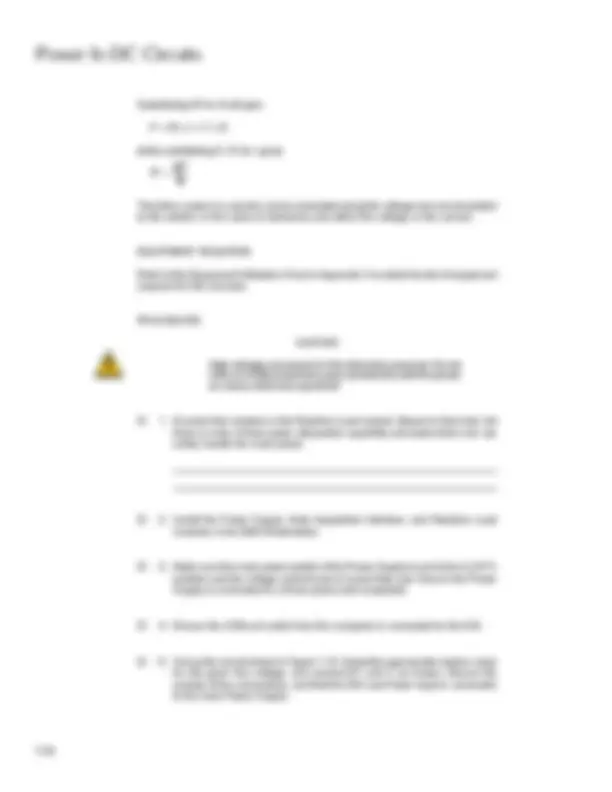
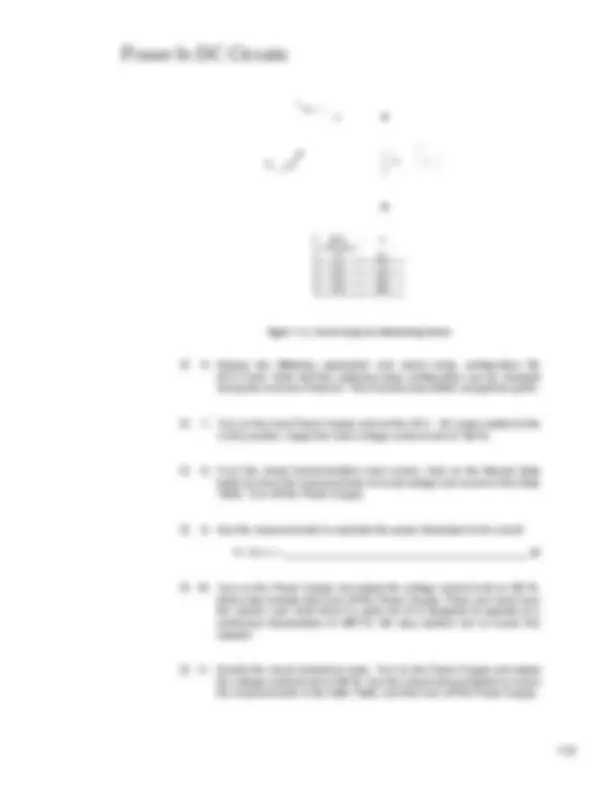
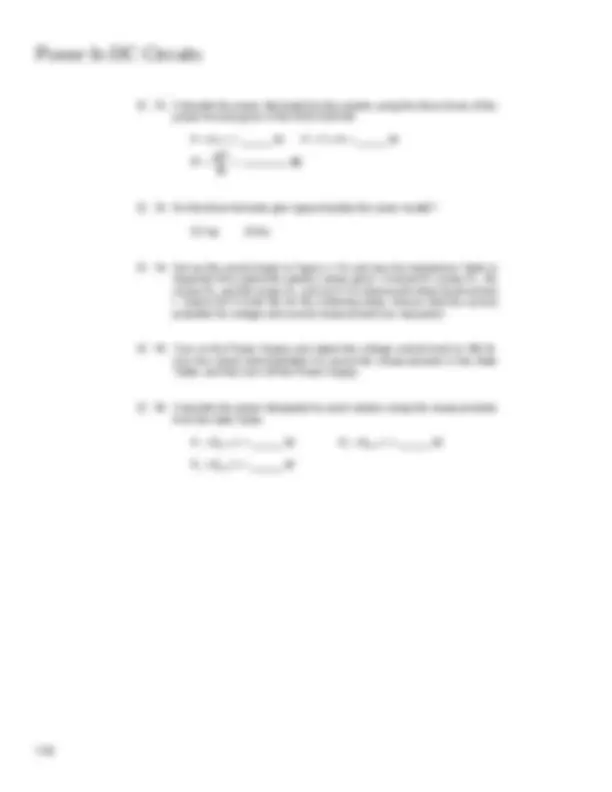
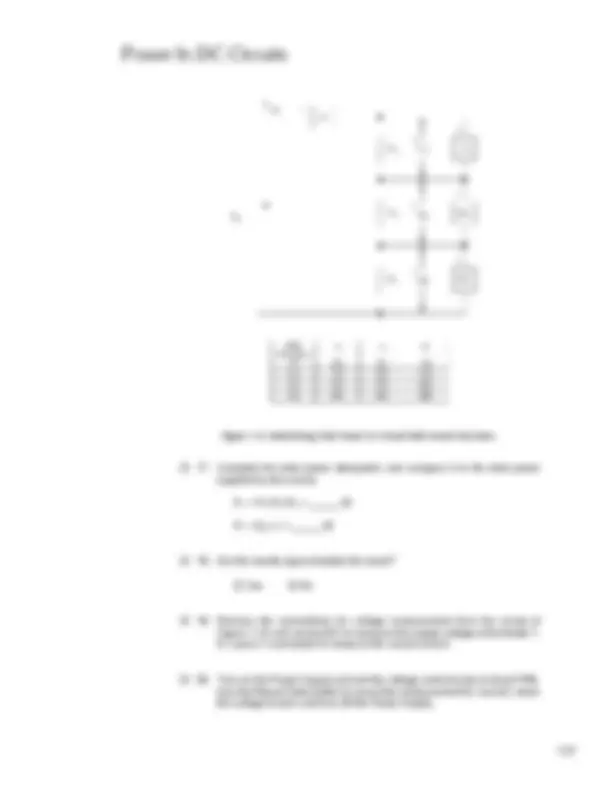

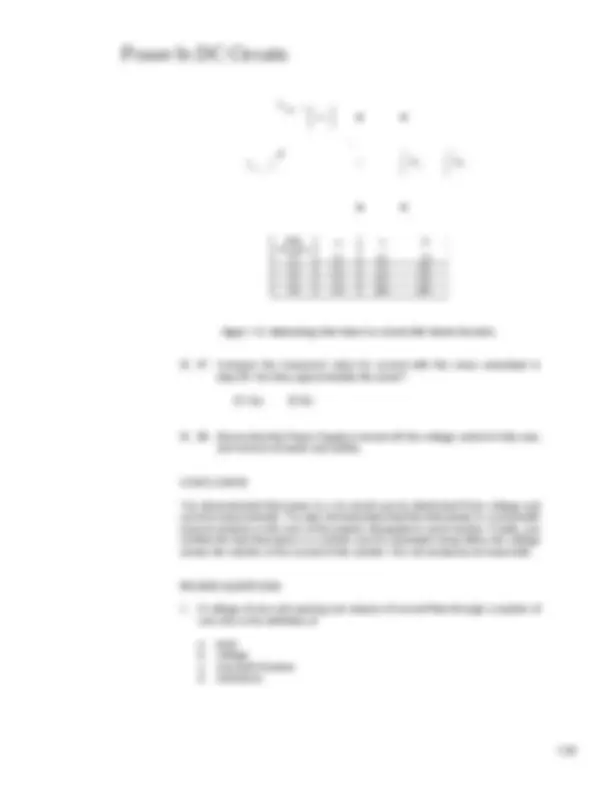
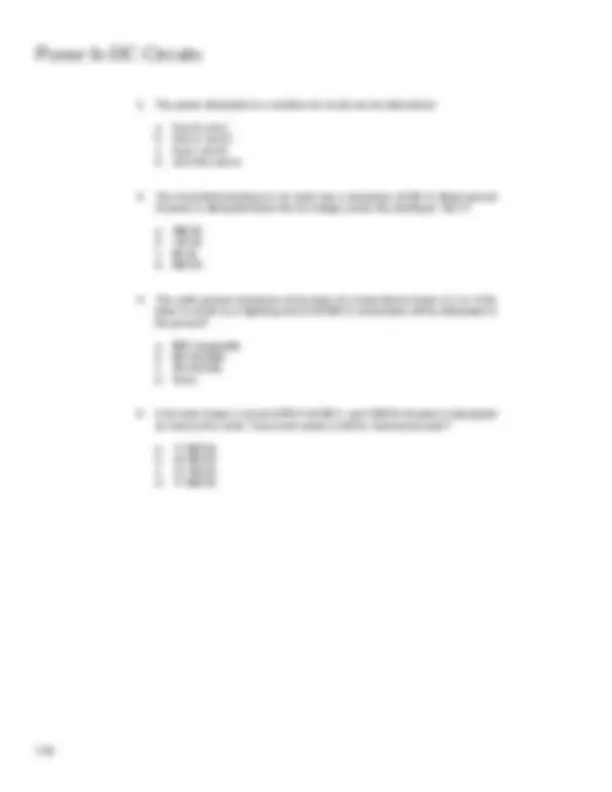
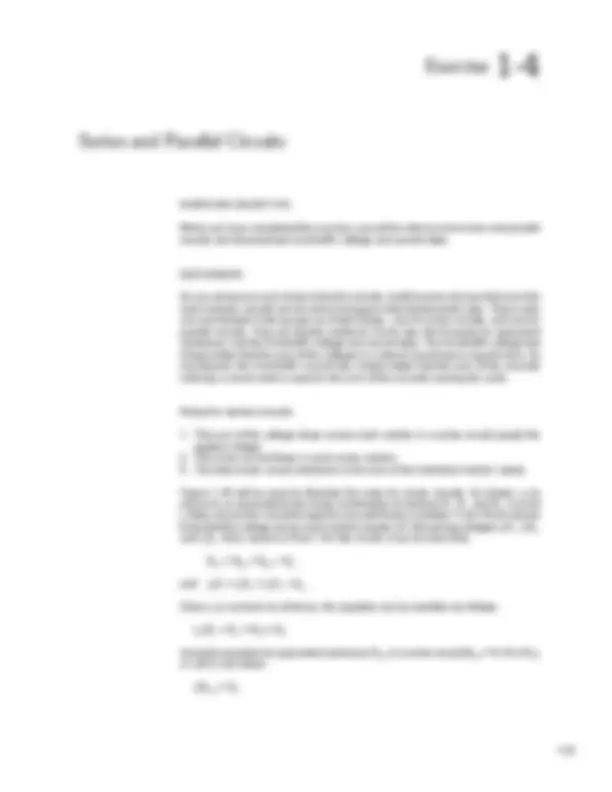
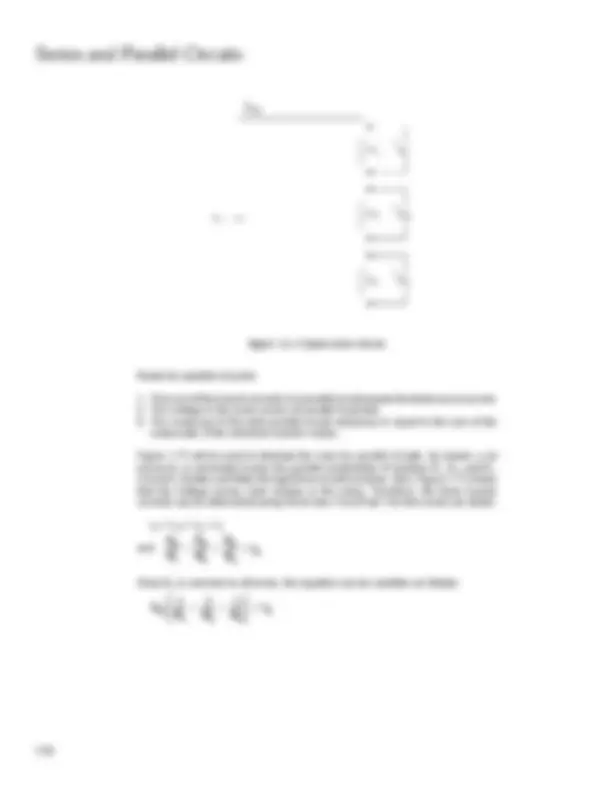
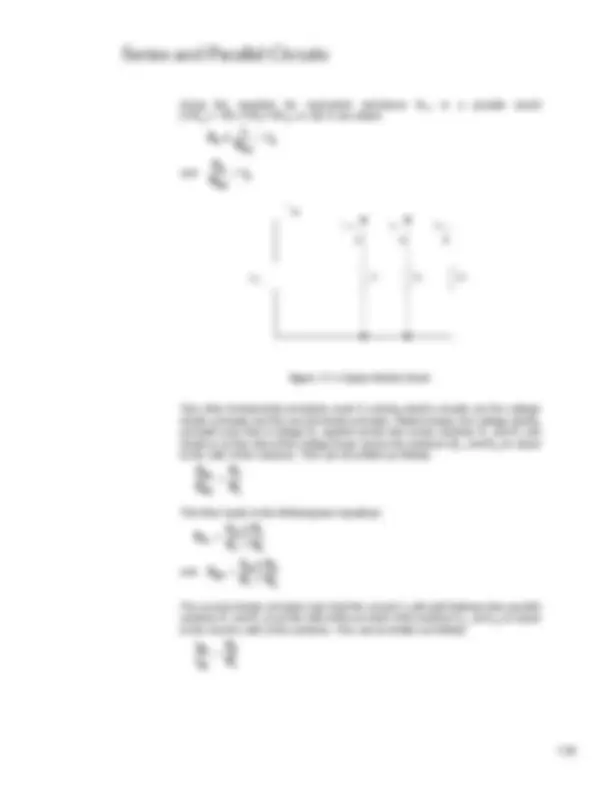
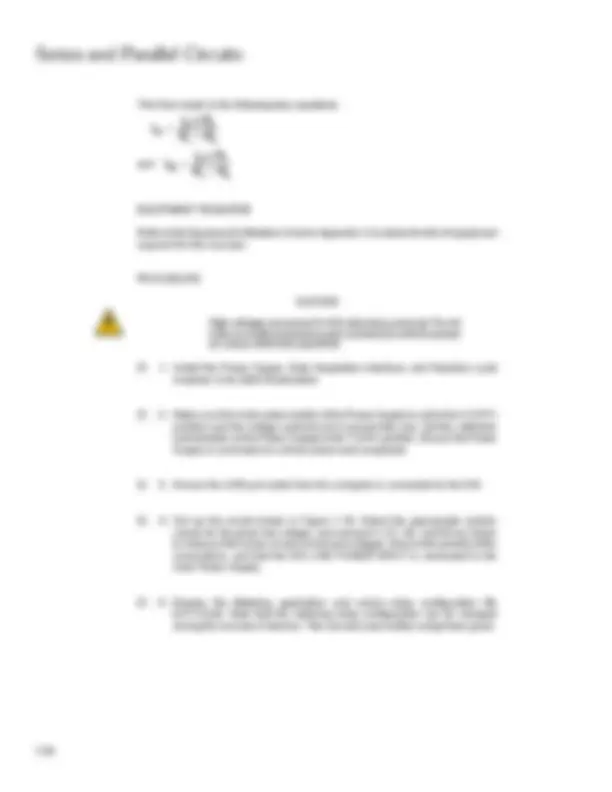
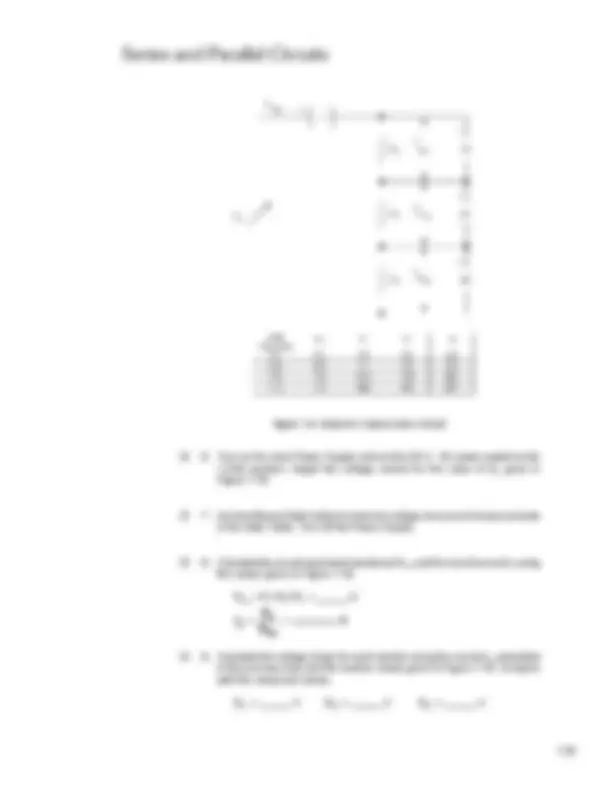
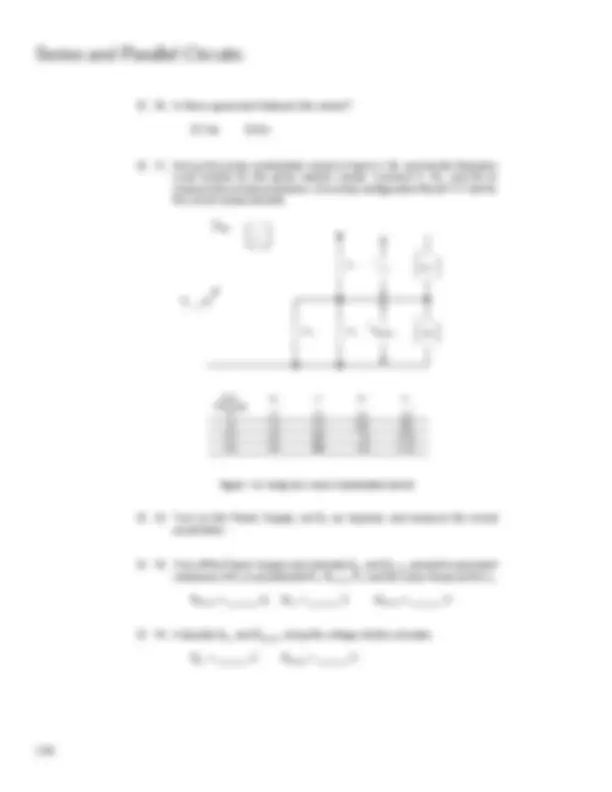
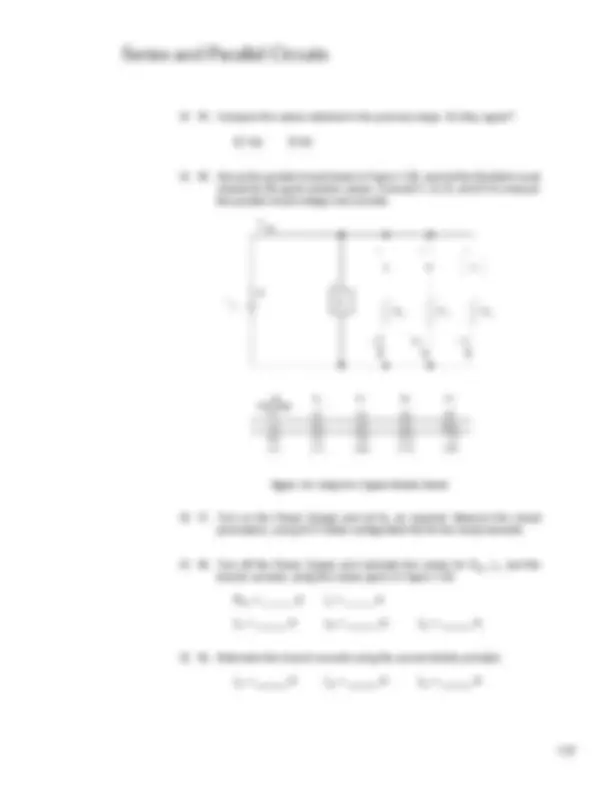
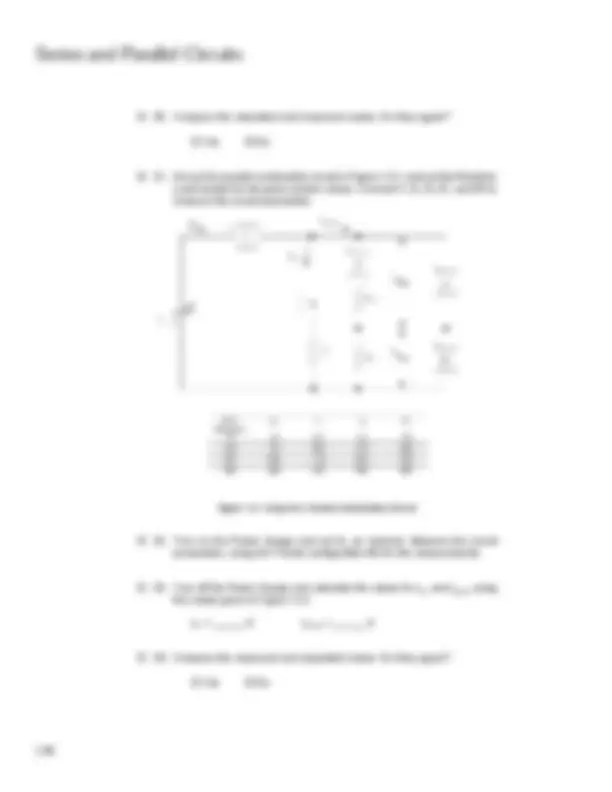
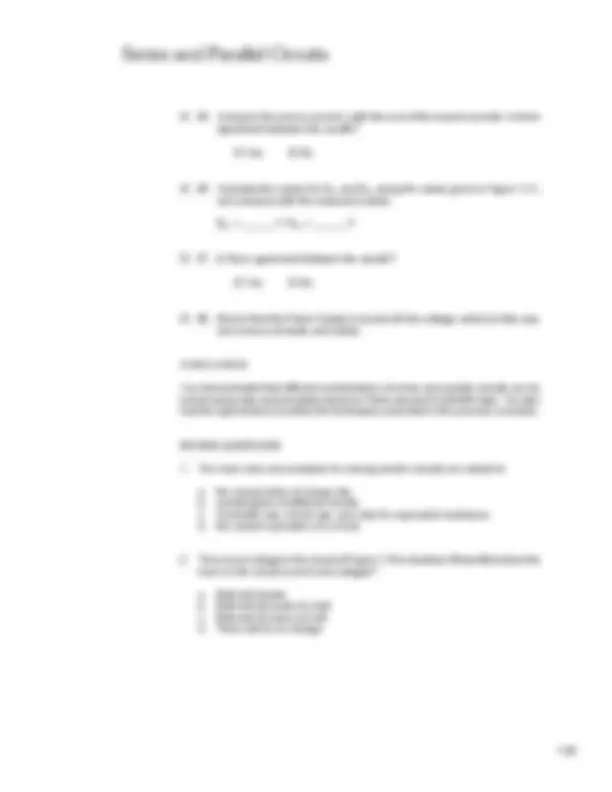
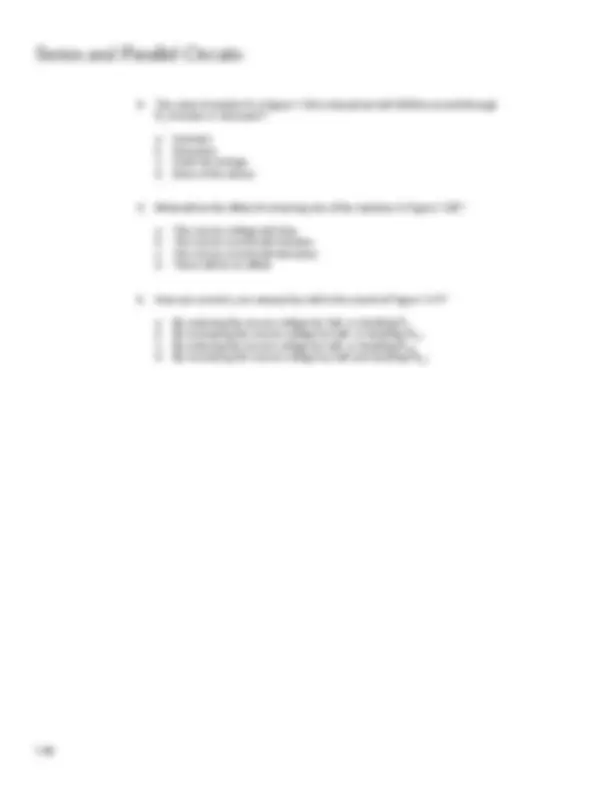
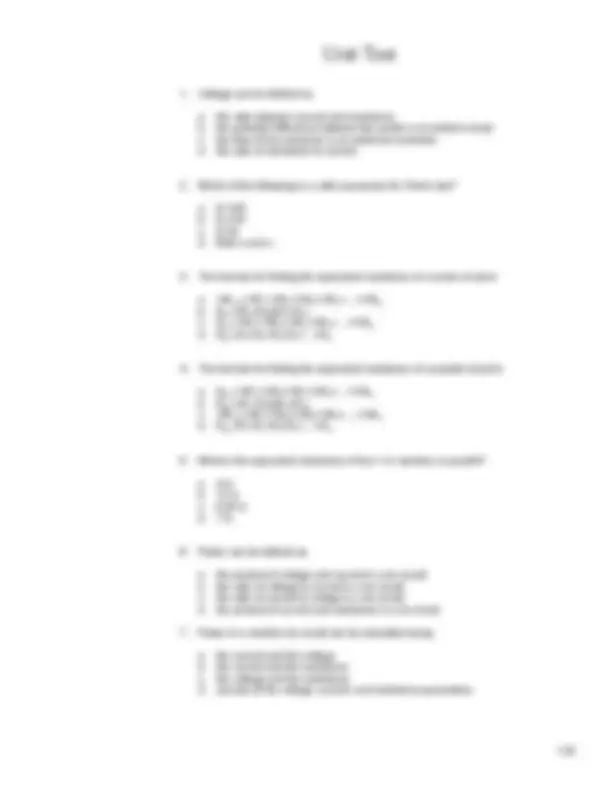
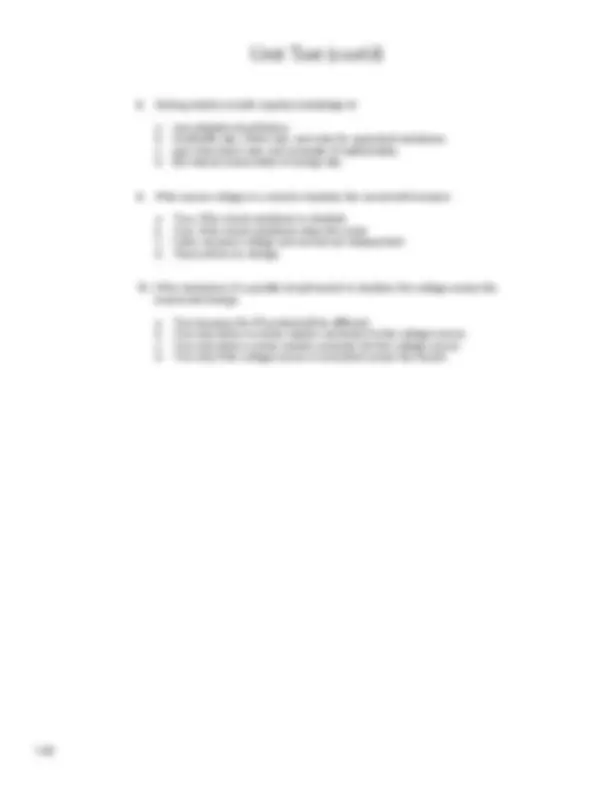
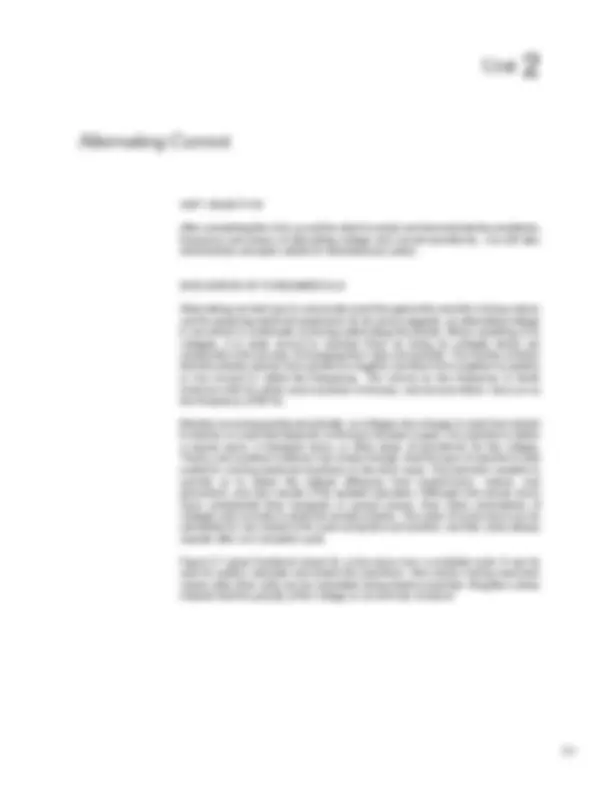
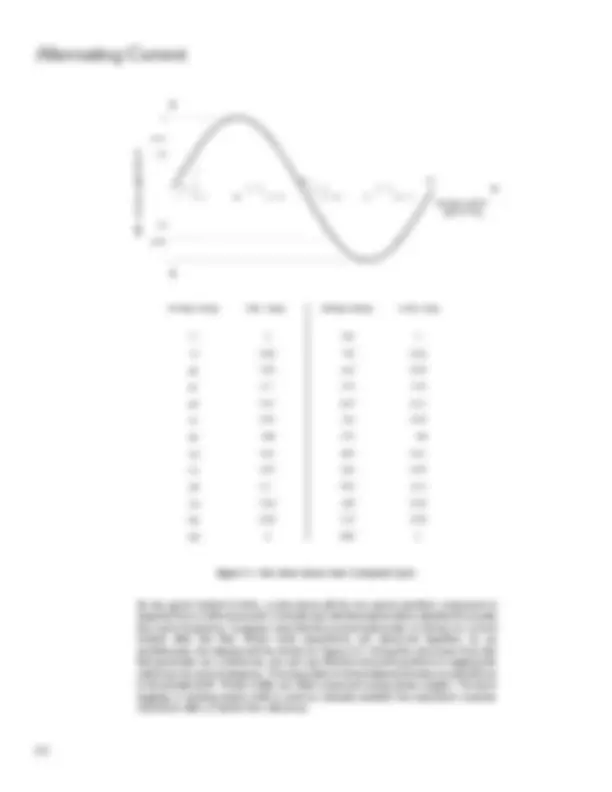
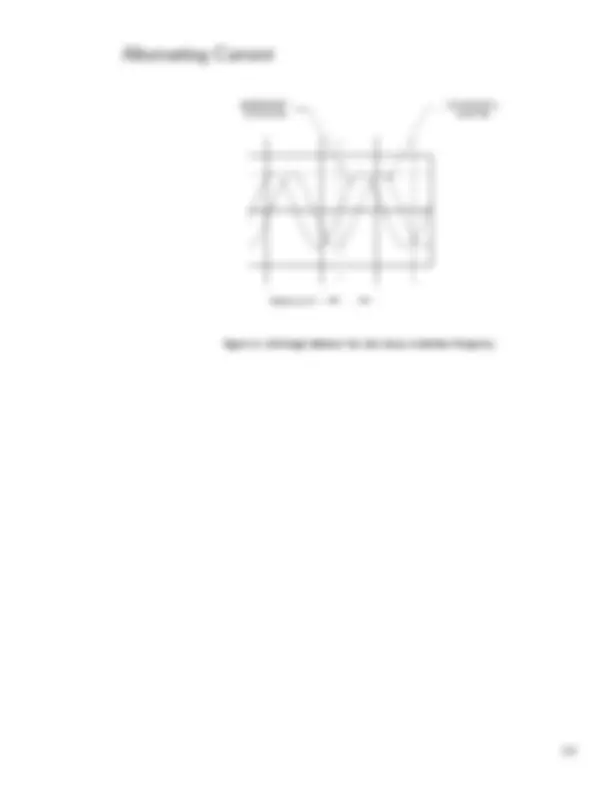

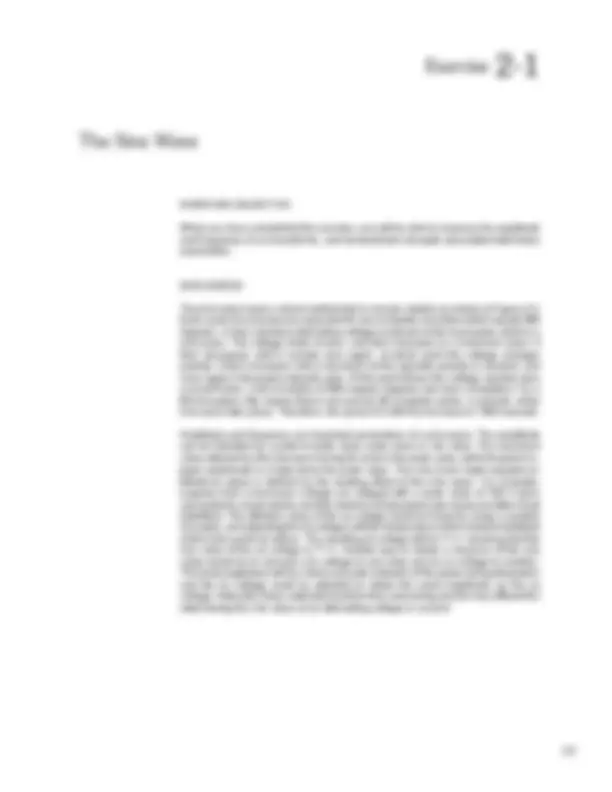
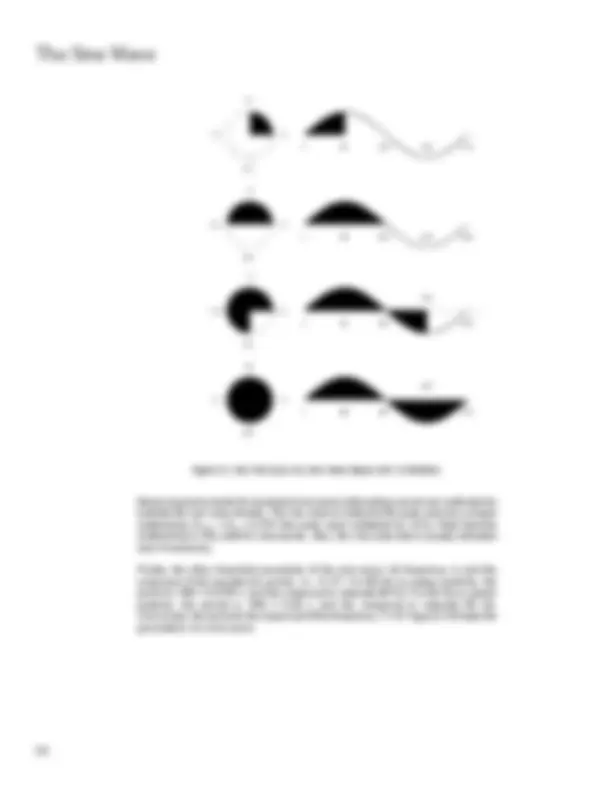
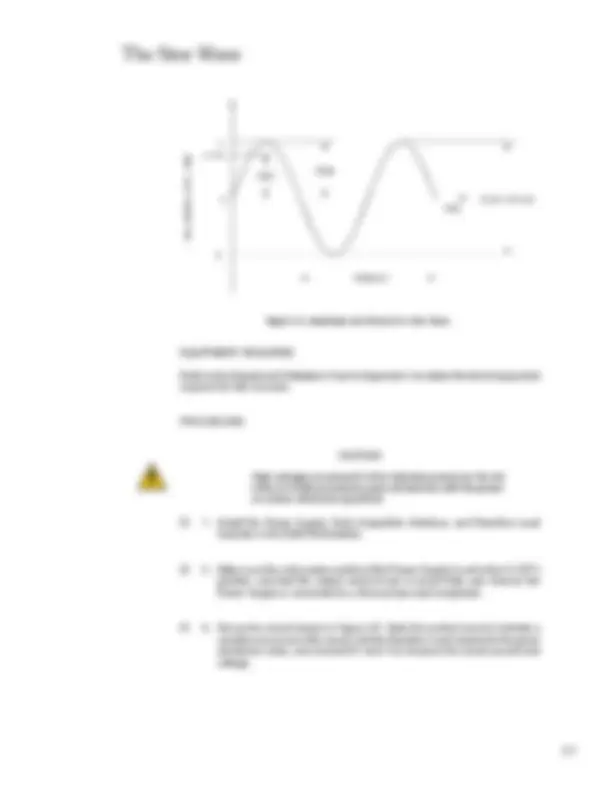
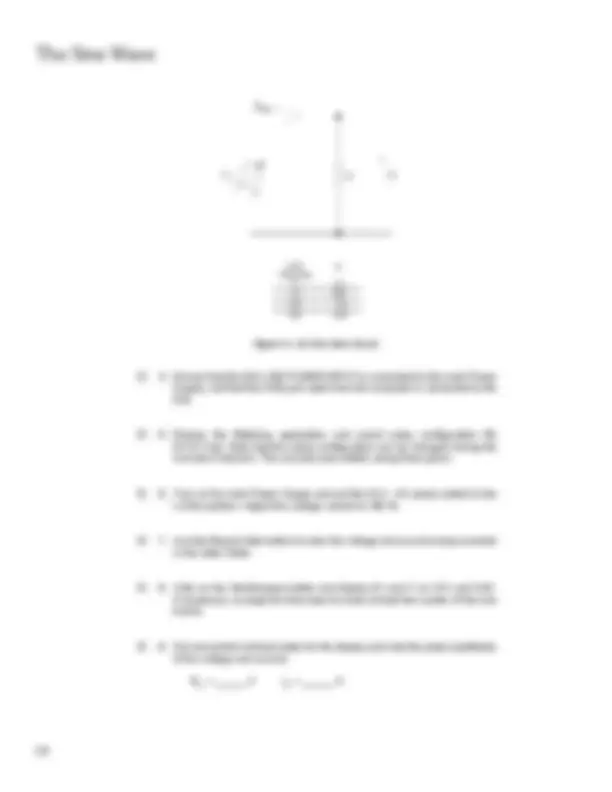
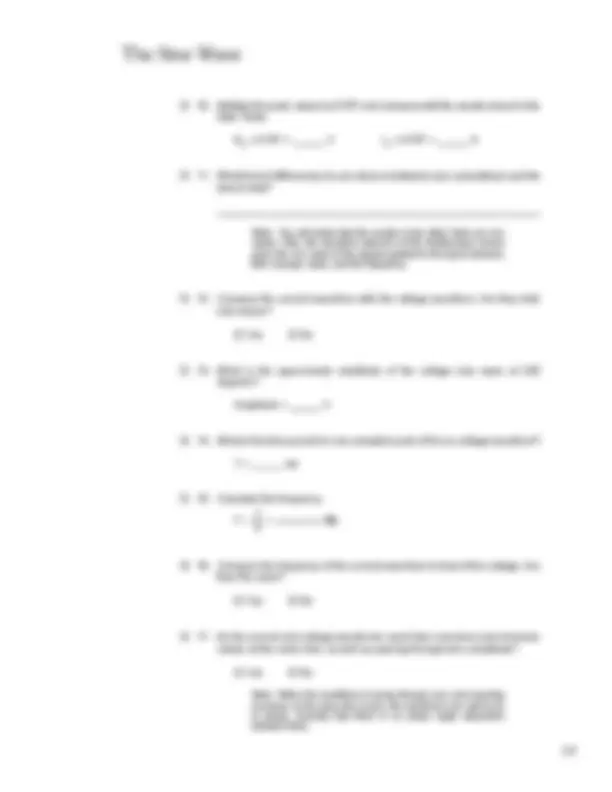
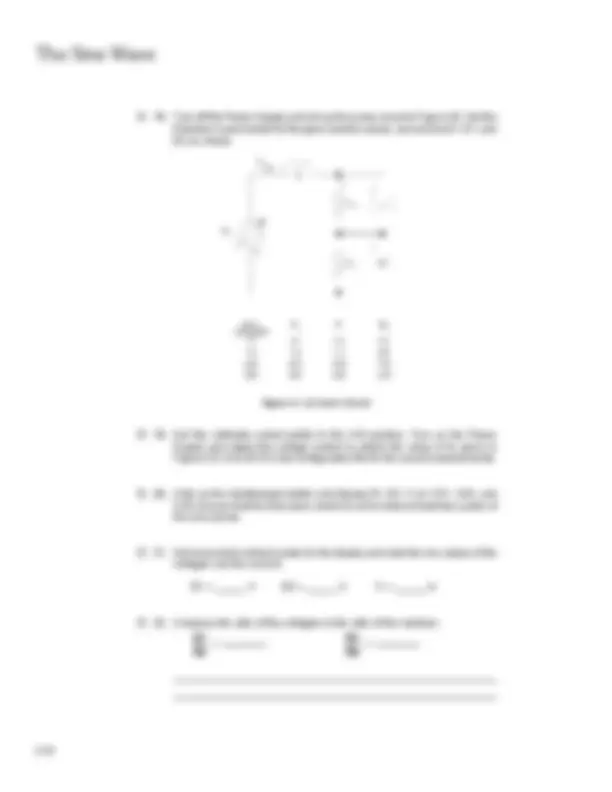
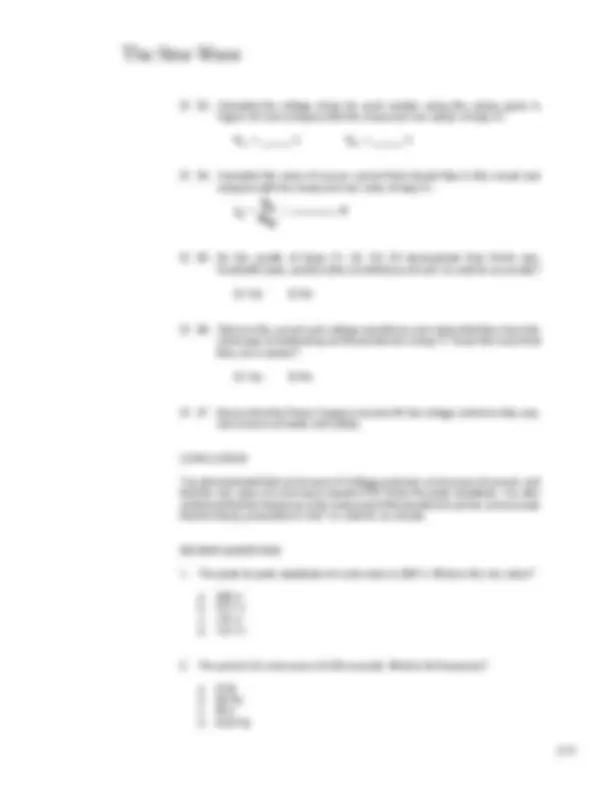
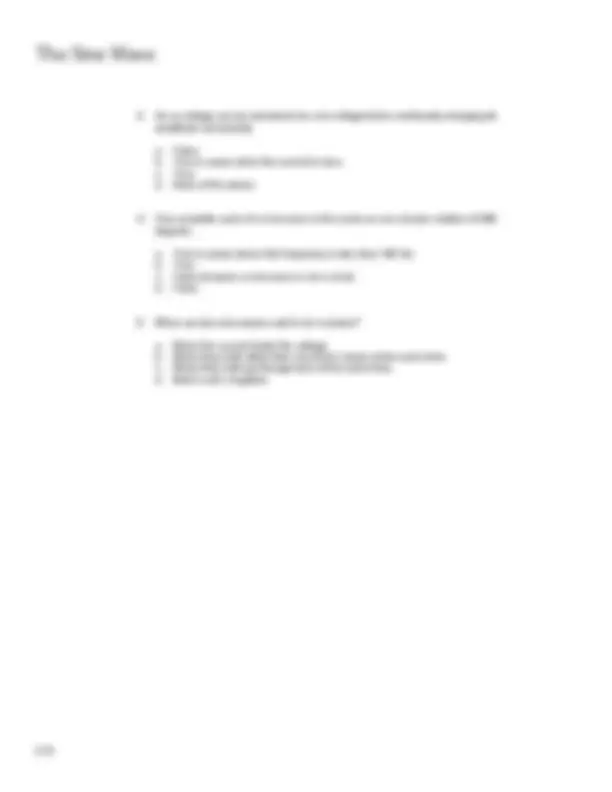
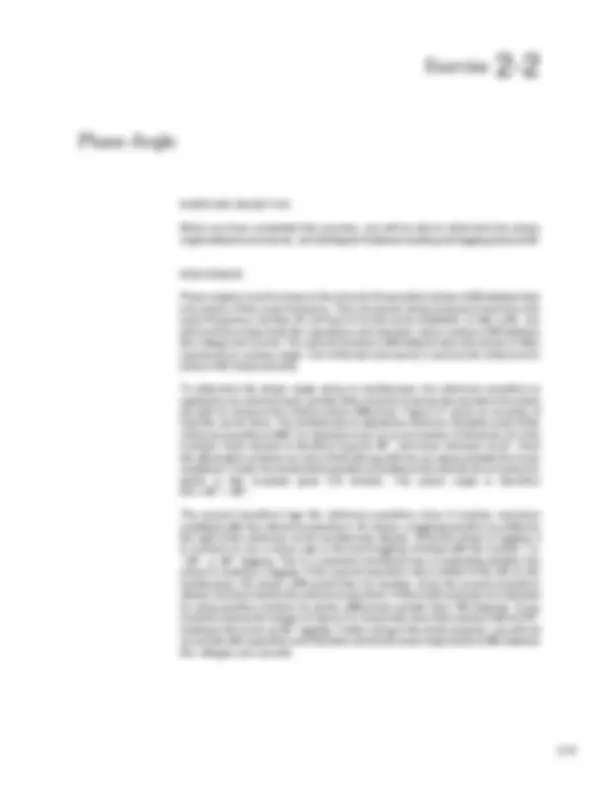
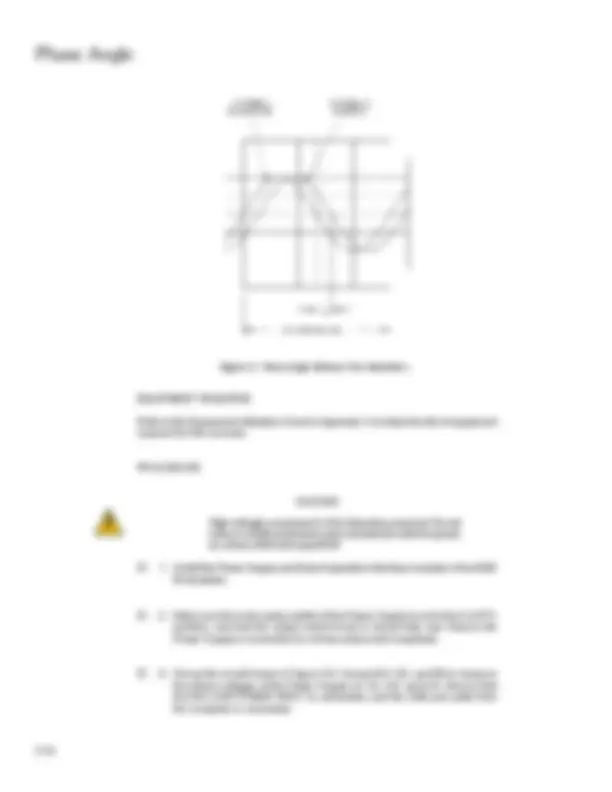
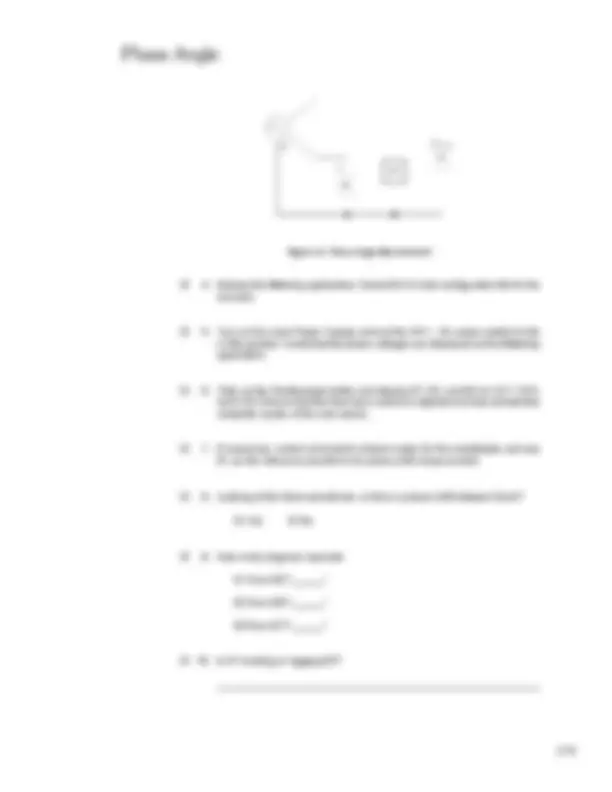
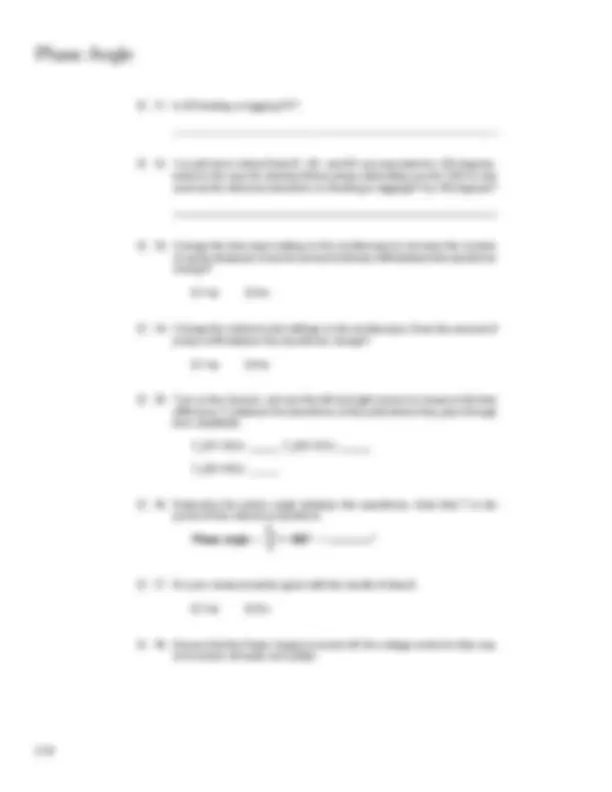
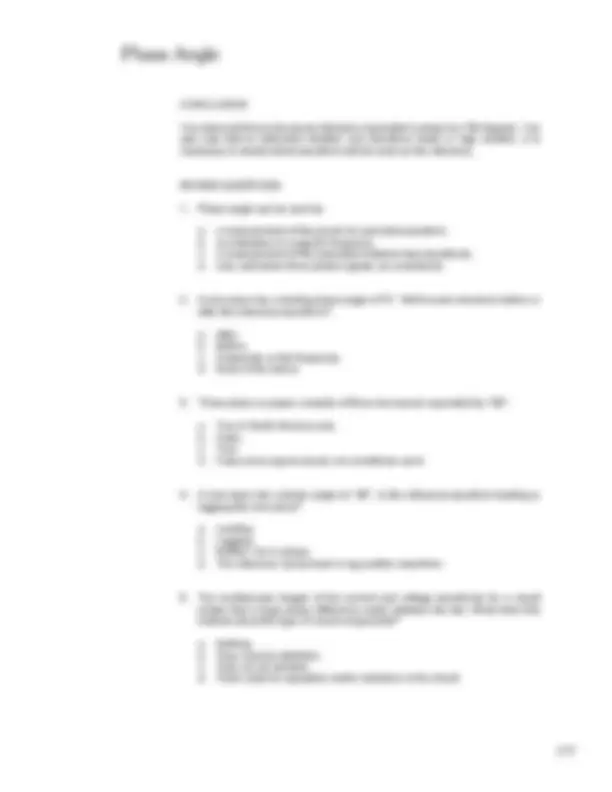

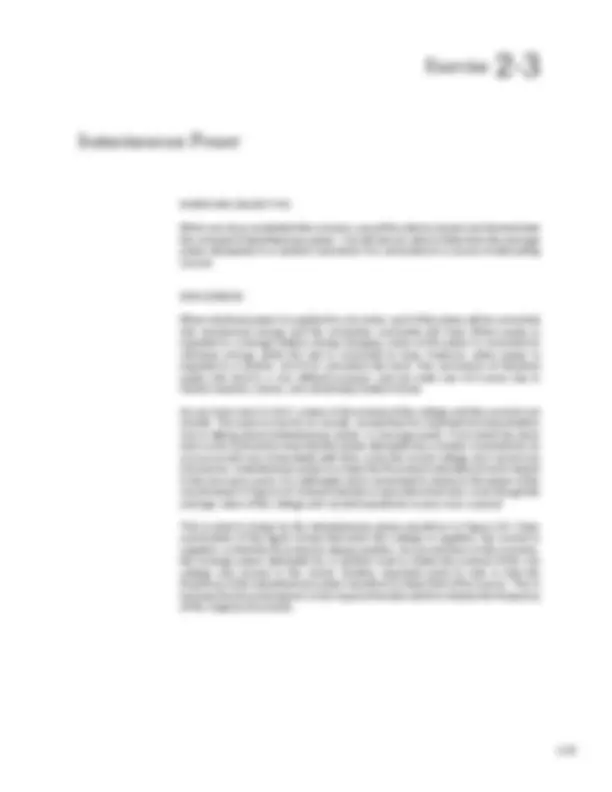
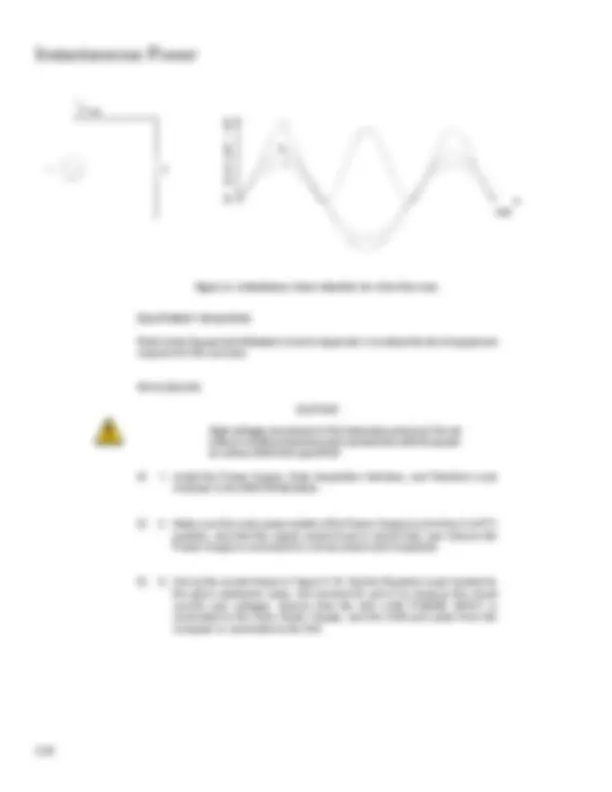
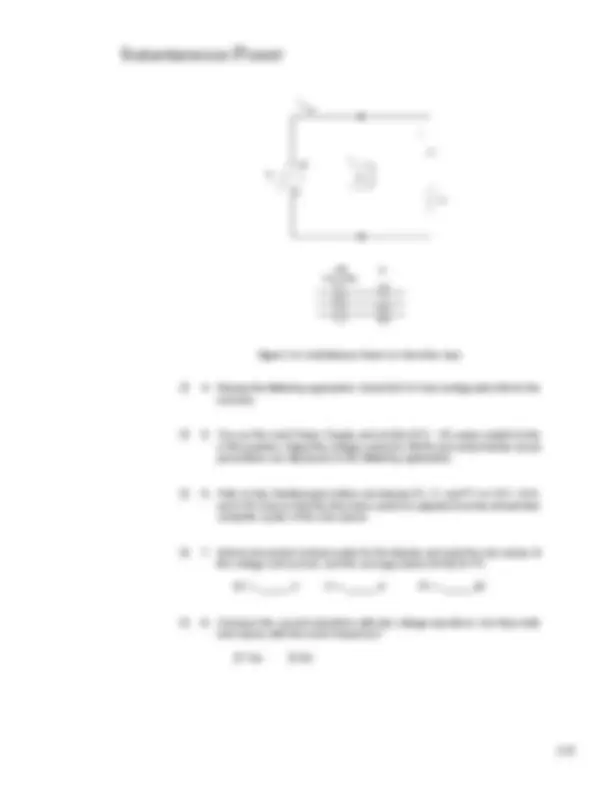
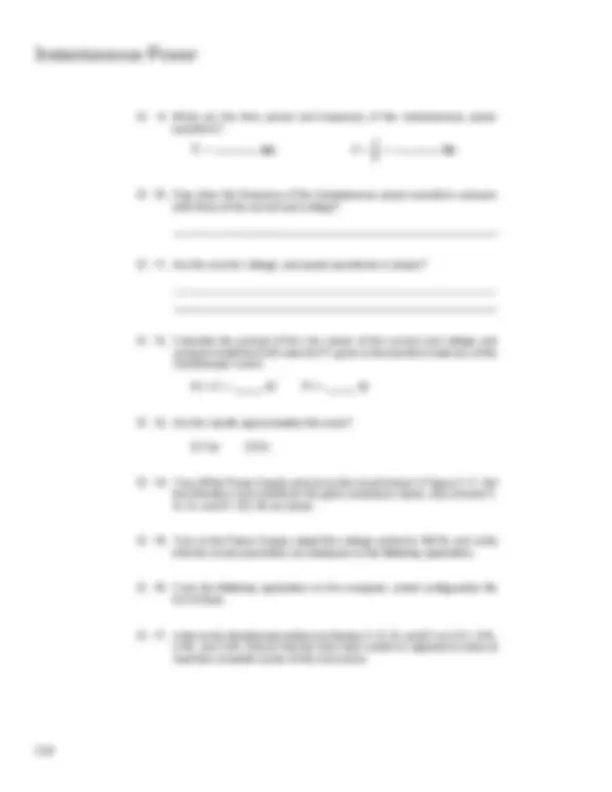
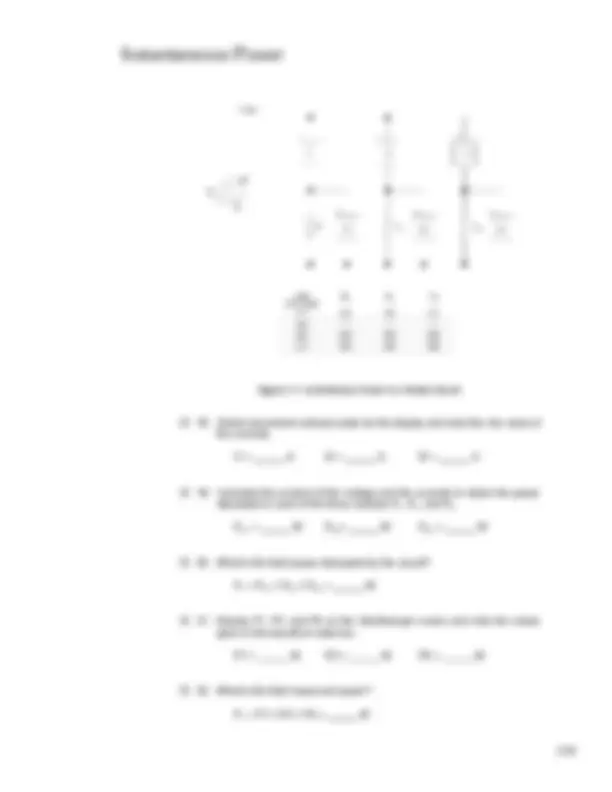
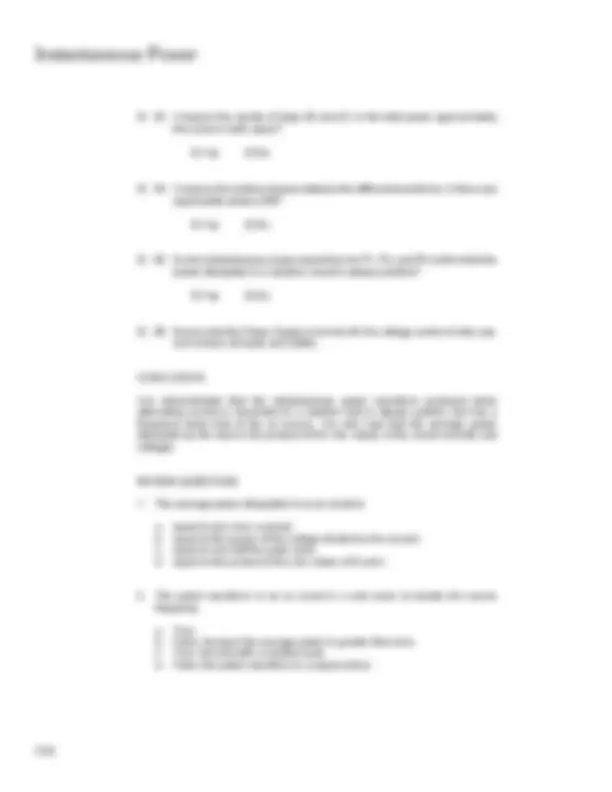
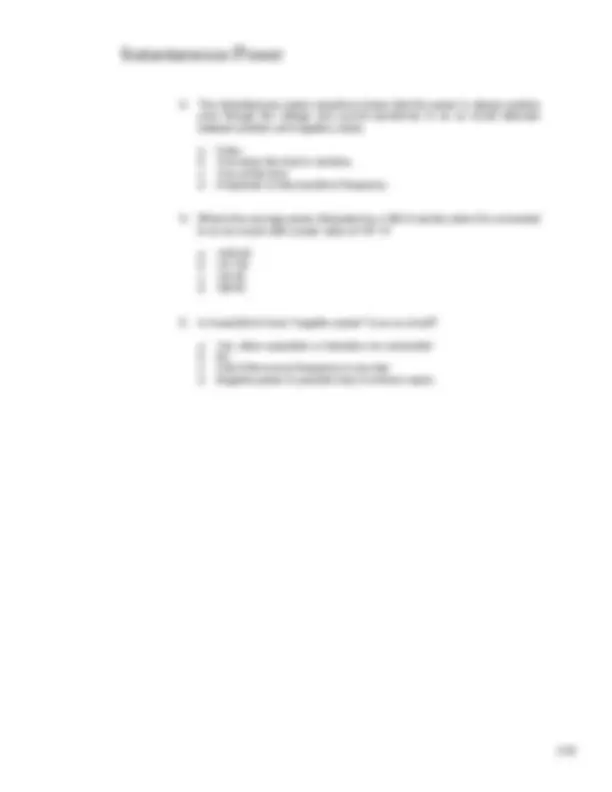

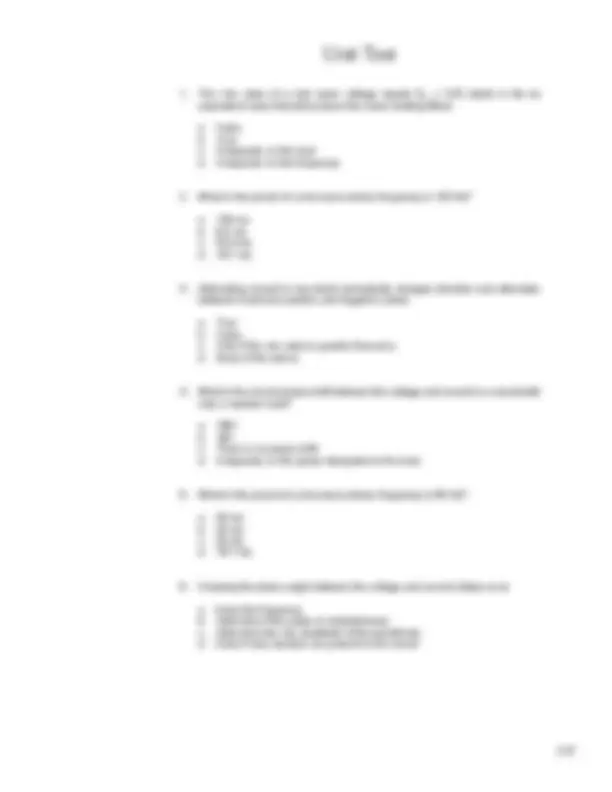
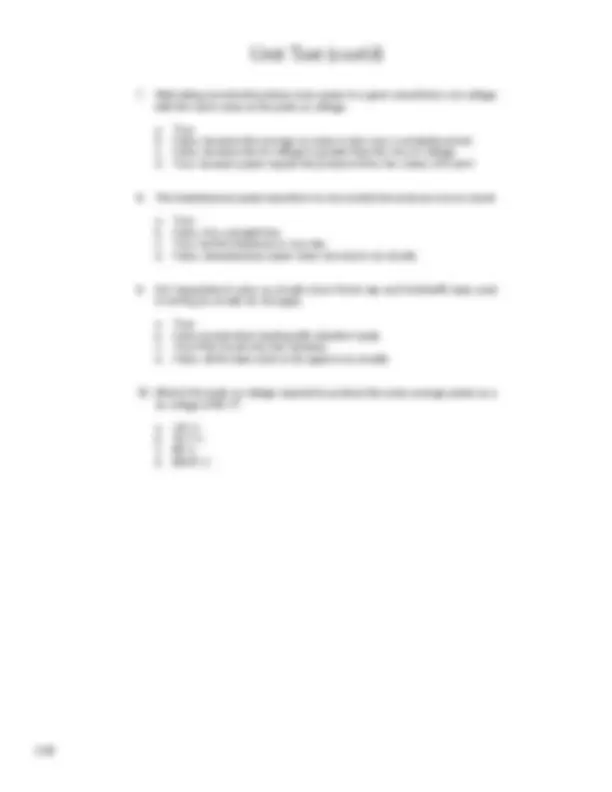
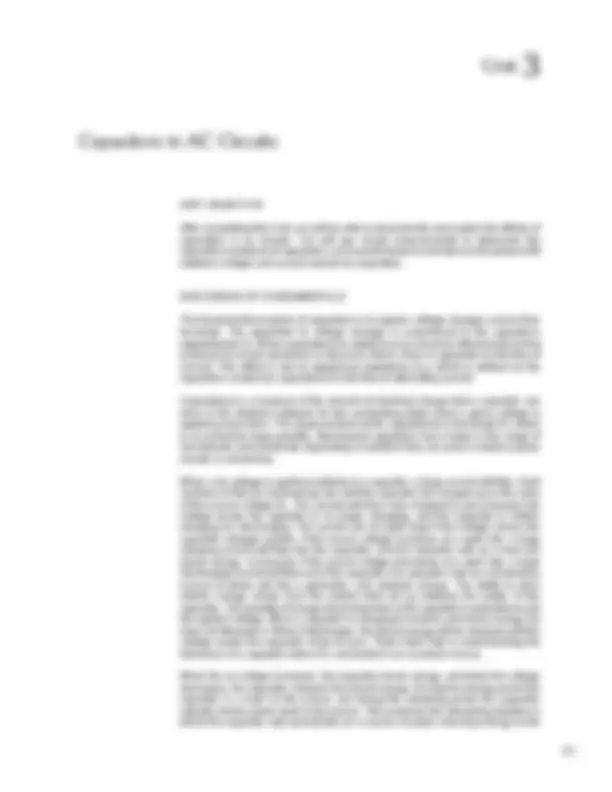
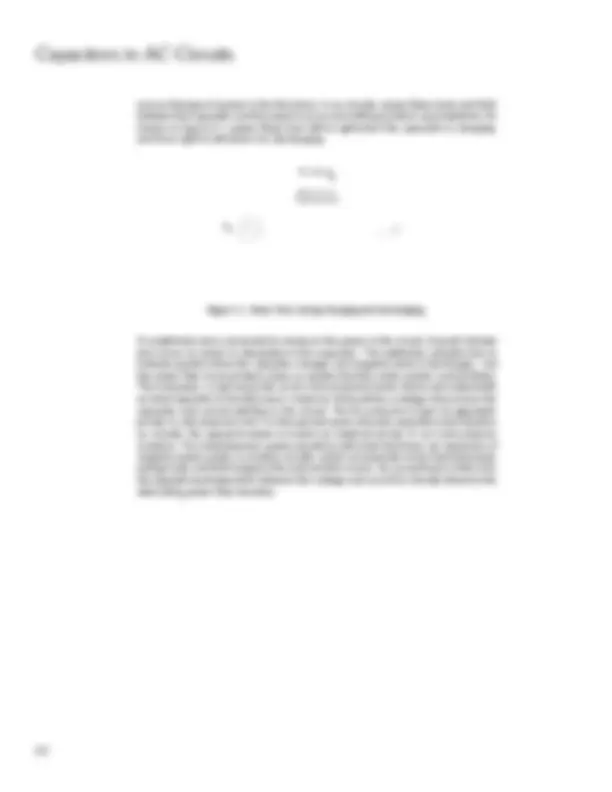
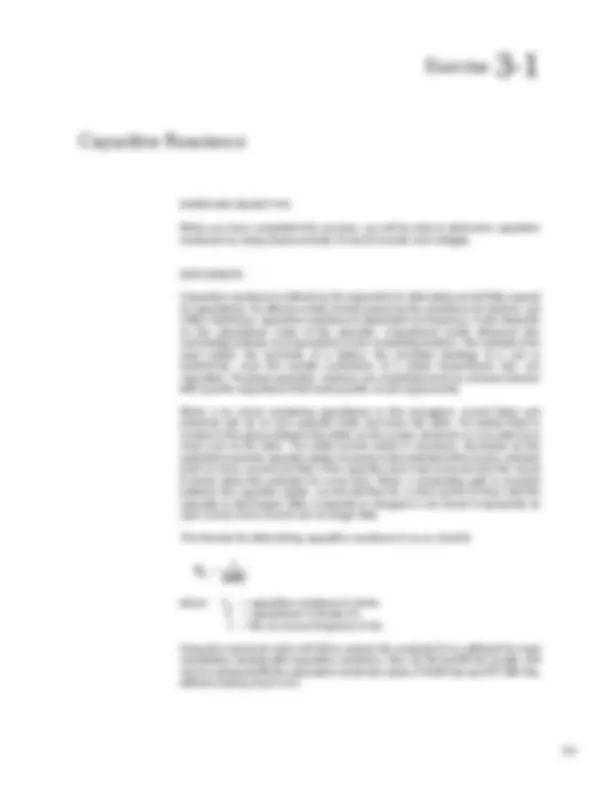
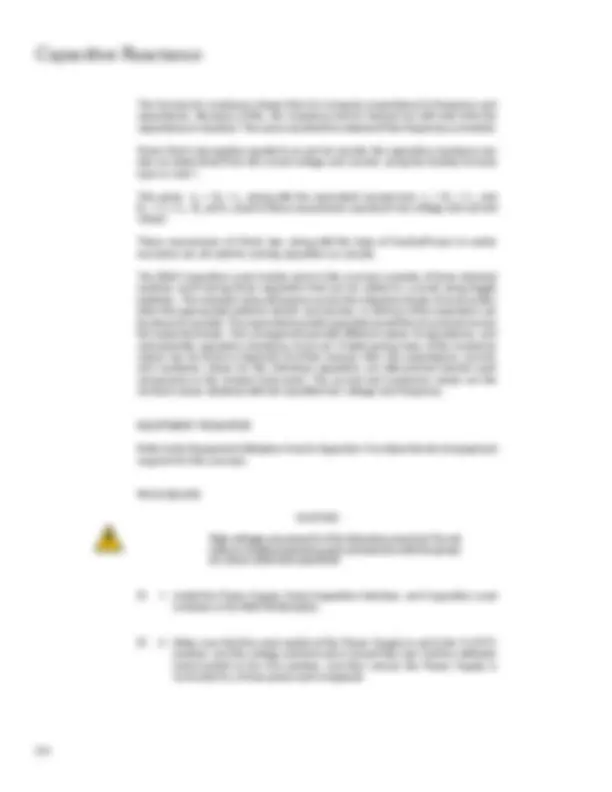
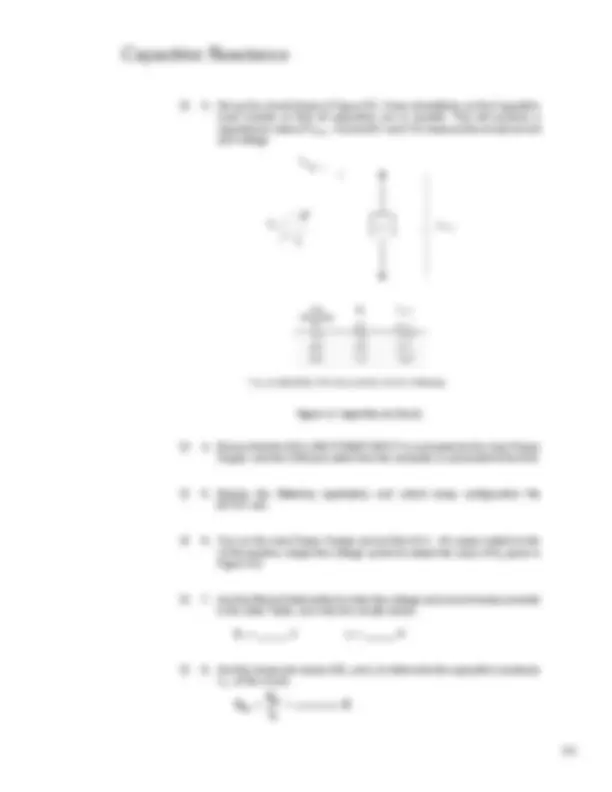
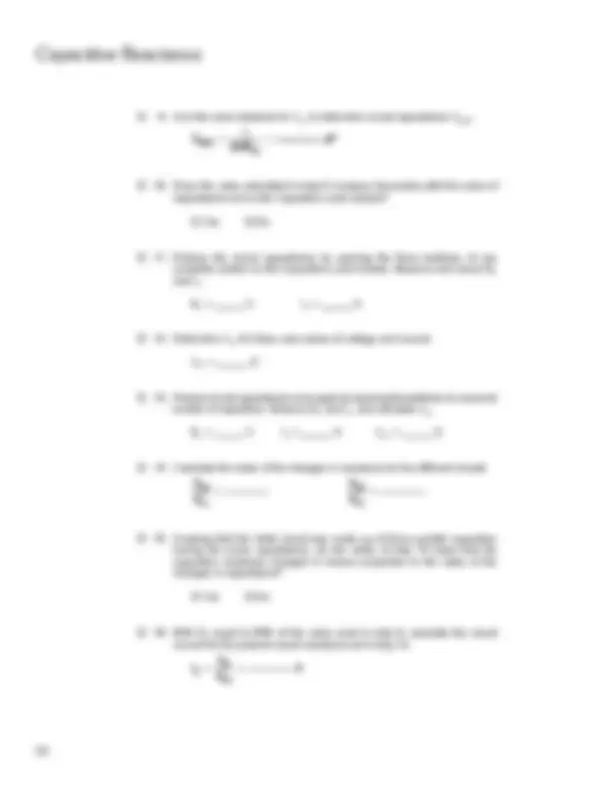
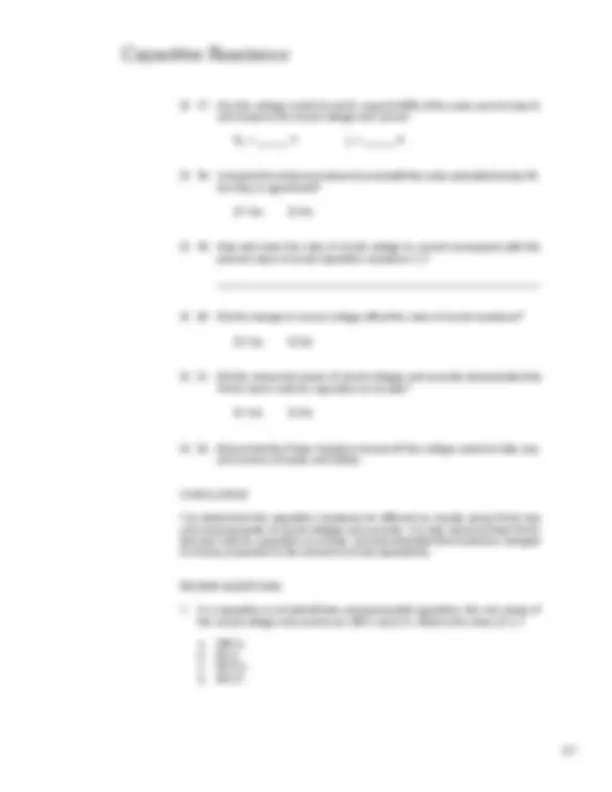
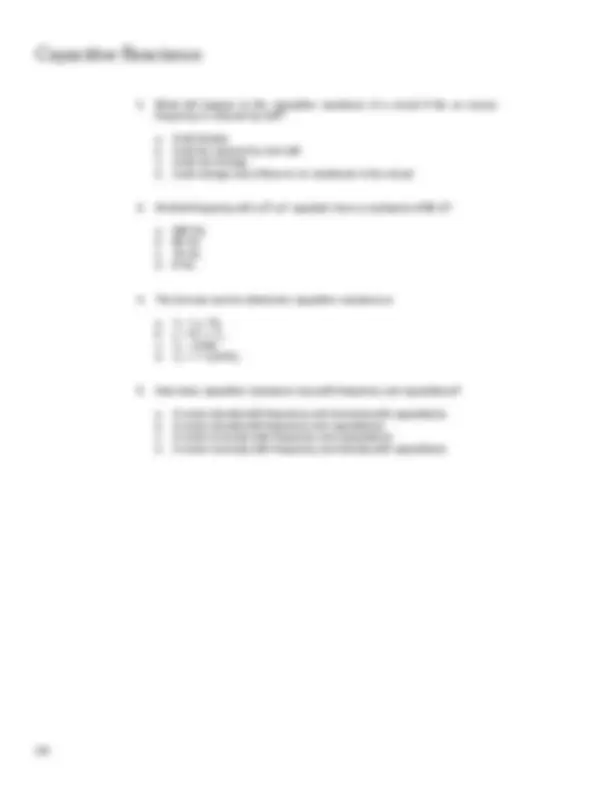
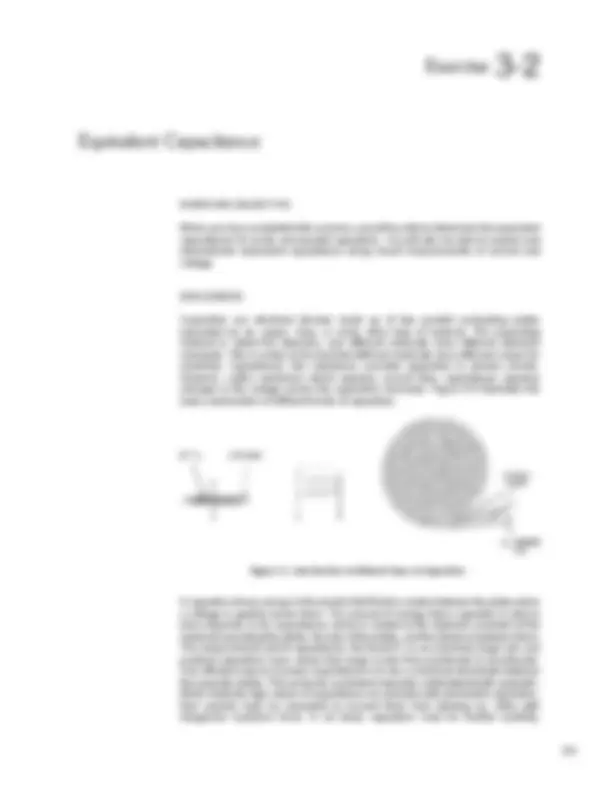
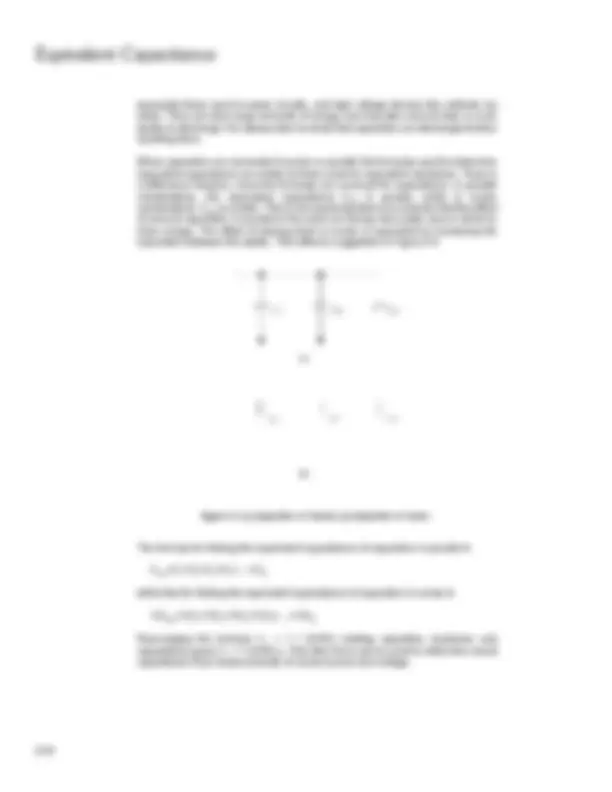
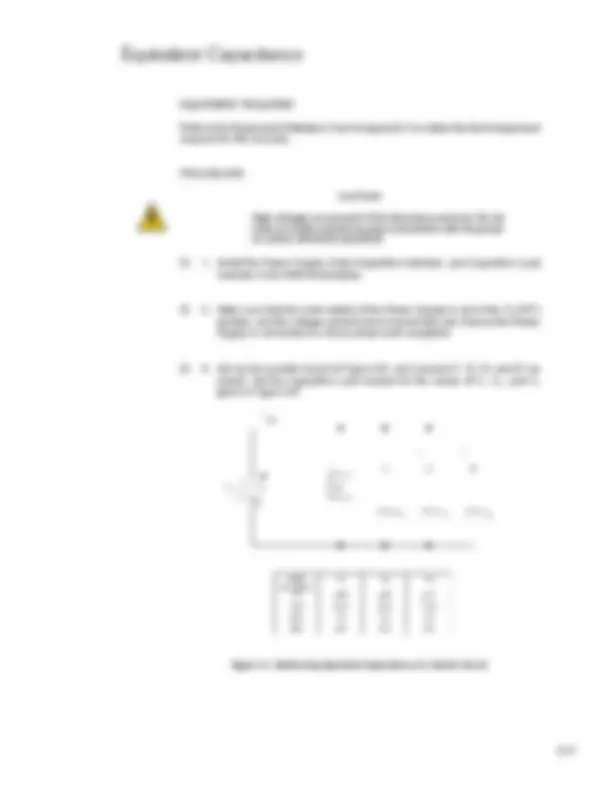
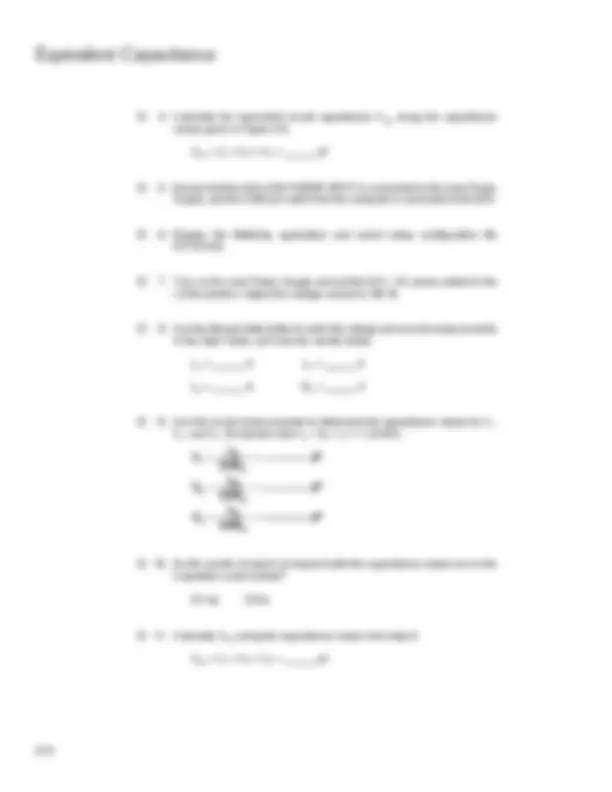
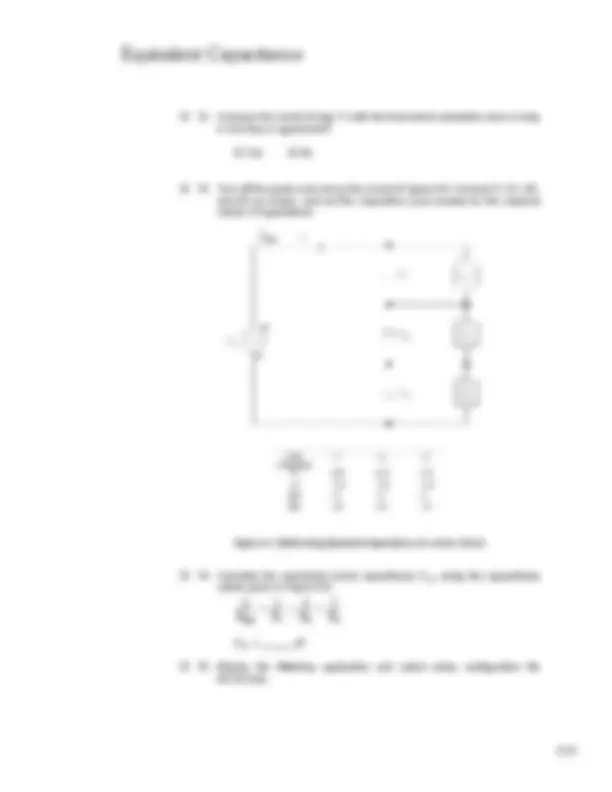
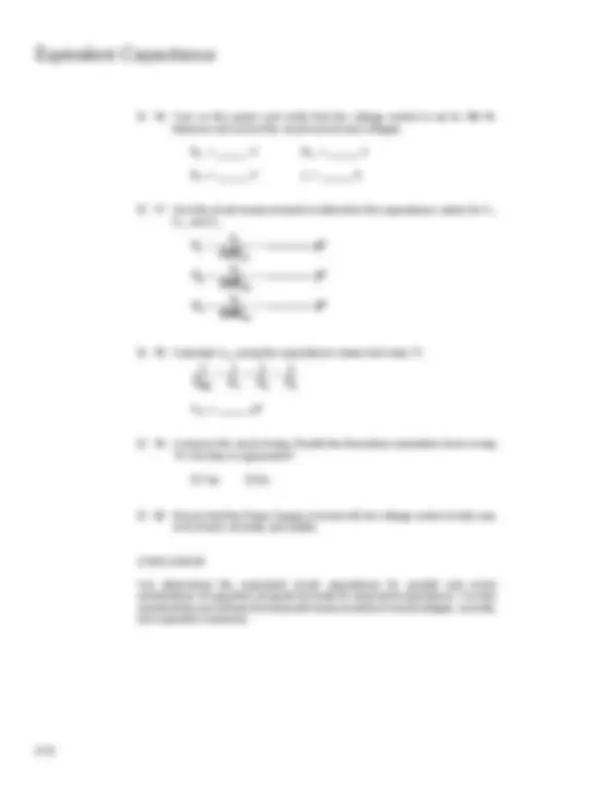
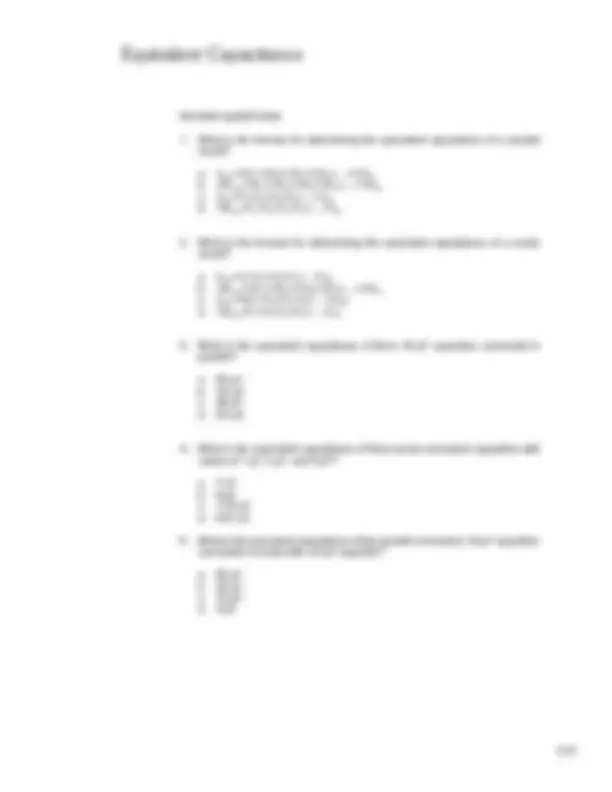


Study with the several resources on Docsity

Earn points by helping other students or get them with a premium plan


Prepare for your exams
Study with the several resources on Docsity

Earn points to download
Earn points by helping other students or get them with a premium plan
Community
Ask the community for help and clear up your study doubts
Discover the best universities in your country according to Docsity users
Free resources
Download our free guides on studying techniques, anxiety management strategies, and thesis advice from Docsity tutors
Laboratory excercises using labvolt.
Typology: Exercises
1 / 310

This page cannot be seen from the preview
Don't miss anything!





























































































Printed in Canada
Power Circuits
and Transformers
Student Manual 30328-
Printed in Canada
Student Manual 30328-
by the Staff of Lab-Volt Ltd.
Copyright © 1995 Lab-Volt Ltd.
All rights reserved. No part of this publication may be reproduced, in any form or by any means, without the prior written permission of Lab-Volt Ltd.
Legal Deposit – First Trimester 1995
ISBN 978-2-89289-325-
SECOND EDITION, AUGUST 1995
Printed in Canada January 2007
IV
V
Table of Contents
Introduction.................................................... XI
Unit 1 Fundamentals for Electrical Power Technology.............. 1-
A review of basic electrical concepts and laws. Using the Virtual Instru- mentation System to measure voltage, current and power.
Ex. 1-1 Voltage, Current, Ohm's Law....................... 1-
Definitions of voltage, current, resistance. Demonstration of Ohm's law using measurements of circuit parameters.
Ex. 1-2 Equivalent Resistance........................... 1-
Determining equivalent resistance for various combinations of series and parallel circuits. Confirming calculations with circuit measurements of voltage and current.
Ex. 1-3 Power in DC Circuits............................ 1-
Distinctions between energy, work and power. Determining power in dc circuits, power formula.
Ex. 1-4 Series and Parallel Circuits....................... 1-
Solving circuits using Kirchhoff's voltage and current laws. Using circuit measurements to confirm theoretical calculations.
Unit 2 Alternating Current...................................... 2-
Introduction to the concepts associated with alternating current, ac waveforms, phase shift, instantaneous power.
Ex. 2-1 The Sine Wave................................... 2-
Definition of alternating current (ac), the amplitude (rms, average and peak values), frequency and phase of ac signals.
Ex. 2-2 Phase Angle................................... 2-
Definition of phase, measurement of phase difference. Leading and lagging phase shift.
Ex. 2-3 Instantaneous Power............................ 2-
The concept of instantaneous power. Average power dissipated in a resistive load supplied by an ac source. Viewing instantaneous power waveforms.
Table of Contents (cont’d)
VII
Unit 5 Power, Phasors and Impedance in AC Circuits............... 5-
Measurement of active, reactive, and apparent power. Using phasors and impedance to analyze ac circuits.
Ex. 5-1 Power in AC Circuits............................. 5-
Active, reactive and apparent power measurements. Definition of power factor. Adding capacitance in parallel with an inductive load to improve a low power factor.
Ex. 5-2 Vectors & Phasors in Series AC Circuits............ 5-
Definition of vectors and phasors. Using vectors and phasors to analyze the operation of series ac circuits. Viewing voltage phasors in RL, RC, and RLC series circuits.
Ex. 5-3 Vectors & Phasors in Parallel AC Circuits........... 5-
Using vectors and phasors to analyze the operation of parallel ac circuits. Viewing current phasors in RL, RC, and RLC parallel circuits.
Ex. 5-4 Impedance..................................... 5-
Definition of impedance, Ohm's law in ac circuits. Using impe- dance concepts to simplify the analysis of complex ac circuits.
Unit 6 Three-Phase Circuits..................................... 6-
Concepts associated with three-phase circuits, balanced loads, wye and delta connections, phase sequence. Power factor, three-phase power measurement, wattmeters, varmeters.
Ex. 6-1 Balanced Three-Phase Circuits..................... 6-
Definitions of line and phase voltages, line and phase currents. Definition of a balanced three-phase load. Setting up wye and
Ex. 6-2 Three-Phase Power Measurement................. 6-
Using the two-wattmeter method to measure the total power supplied to a three-phase load. Power factor in three-phase circuits.
Ex. 6-3 Phase Sequence................................ 6-
Definition of phase sequence, and its importance for certain types of three-phase loads. How to determine phase sequence.
Table of Contents (cont’d)
VIII
Unit 7 Single-Phase Transformers............................... 7-
The principles of transformer operation. Magnetic induction, transformer loading, series-aiding and series-opposing configurations.
Ex. 7-1 Voltage and Current Ratios........................ 7-
Primary and secondary windings. Definition of the turns ratio, step- up and step-down operation. Transformer saturation, voltage and current characteristics.
Ex. 7-2 Transformer Polarity............................ 7-
Determining the polarity of transformer windings. Connecting windings in series-aiding so that winding voltages add, or in series- opposing so that winding voltages subtract.
Ex. 7-3 Transformer Regulation.......................... 7-
Definition of transformer regulation. Determining the voltage regulation of a transformer with varying loads. Inductive and capacitive loading.
Unit 8 Special Transformer Connections.......................... 8-
Connecting transformer windings in different ways to obtain special-use transformers. Volt-ampere ratings.
Ex. 8-1 The Autotransformer............................. 8-
Interconnecting primary and secondary windings of a standard transformer to obtain an autotransformer. Step-up and step-down connections.
Ex. 8-2 Transformers in Parallel......................... 8-
Connecting transformers in parallel to supply greater load power. Measuring the efficiency of parallel-connected transformers.
Ex. 8-3 Distribution Transformers........................ 8-
Introduction to basic characteristics of distribution transformers. The behaviour of a distribution transformer under different load conditions.
X
XI
Introduction
The 29 exercises in this manual, Power Circuits and Transformers , provide a foundation for further study in Electrical Power Technology, and their completion will allow students to readily continue with material contained in AC/DC Motors and Generators , the second volume of the series, Electrical Power Technology Using Data Acquisition.
This manual is divided into nine Units:
The hands-on exercises in this manual can be performed using either the Electromechanical System (EMS system) or the Electromechanical System using Virtual Laboratory Equipment (LVSIM ®^ -EMS). When using the EMS system, you should turn on the computer and start Windows ®^ before each exercise. On the other hand, when using LVSIM ®^ -EMS, you should turn on the computer, start Windows ®^ , and start LVSIM ®^ -EMS before each exercise.
The hands-on exercises guide students through circuit setup and operation, and explore many of the measurement and observation capabilities of the virtual instrumentation system. Much detailed information about circuit parameters (voltage and current levels, waveforms, phase angles, etc.) can be visualized with the virtual instruments, and students are encouraged to fully explore system capabilities.
Various symbols are used in many of the circuit diagrams given in the exercises. Each symbol is a functional representation of a device used in Electrical Power Technology. The use of these symbols greatly simplifies the circuit diagrams by reducing the number of interconnections shown, and makes it easier to understand circuit operation. Appendix A lists the symbols used, the name of the device which each symbol represents, and a diagram showing the equipment and connections required to obtain the device.
The exercises in this manual can be carried out with ac network voltages of 120 V, 220 V, and 240 V. The component values used in the different circuits often depend on the ac line voltage. For this reason, components in the circuit diagrams are identified where necessary with letters and subscripts. A table accompanying the circuit diagram indicates the component value required for each ac network voltage (120 V, 220 V, 240 V).
Appendix B provides a table giving the usual impedance values that can be obtained with each of the 120-V, 220-V, and 240-V versions of the EMS load modules. Finally, Appendix C provides a chart outlining the exact equipment required for each exercise.
1-
Unit (^1)
Fundamentals for Electrical Power Technology
After completing this unit, you will be able to demonstrate and apply basic concepts for solving simple electric circuits. You will also be able to measure circuit voltages and currents using the Lab-Volt Data Acquisition and Management (LVDAM-EMS) system.
The study of electricity and electric circuits revolves around just a few fundamental laws, principles, key words and terms. The symbols used to represent them are universal and form the basic language of people working in the electrical field. It is therefore important to learn the symbols and terminology. Whether one is talking about voltage (E), current (I), resistance (R), power (P), or other electrical concepts, they are all represented in a compact way using different symbols. Appendix A lists the symbols and terms used in the circuit diagrams of this manual.
In order to better understand the relationship between voltage, current and resistance, a basic understanding of the nature of electricity is useful. Electricity is just another kind of energy. Present in various forms, such as atomic, chemical, thermal, hydraulic, etc., energy in one form can be transformed to another form. For example, the chemical energy of a dry-cell battery produces electricity to power everyday electronic devices.
Electricity is intimately linked to the atomic structure of matter and one of the atomic particles present in matter is the electron. It has a negative electric charge and orbits around the atomic nucleus. Since the nucleus has a positive electric charge, it attracts the negatively charged electron and holds it in place. The further the electron is from the nucleus, the lower the atomic force attracting it. Certain materials, called conductors, have electrons in their outer orbit that can be easily dislodged using external means like heating, or applying an electric field. The electrons thus removed from their orbit become free electrons and move between atoms. This leads to the flow of electric current, which is simply the movement of many electrons at the same time. Figure 1-1 (a) to (d) shows simplified representations of the electric field around a single positive electric charge, around a single negative electric charge, between electric charges of opposite polarities, and between electric charges of the same polarity.
Fundamentals for Electrical Power Technology
1-
Figure 1-1. Simplified Representations of Electric Fields.
The greater the electric field, the greater the number of electrons that move at the same time, and the greater the electric current. The greatness of the electric field is measured between two points of the field, and is referred to as potential difference, or voltage. The idea of potential difference is similar to that for hydraulic pressure. A water dam 300 meters high produces a higher pressure on water flowing in a pipe than a dam which is only 30 meters high. This is because potential energy increases when height increases. Similarly, a voltage of 100 V therefore creates a greater electrical pressure on the electrons (so that they move) than a voltage of 10 V. Some of the various sources of electricity that produce different levels of electrical
1-
Exercise (^) 1-
Voltage, Current, Ohm's Law
When you have completed this exercise, you will be able to measure circuit voltages and currents, and demonstrate Ohm's Law using measurements of these circuit parameters.
Ohm's Law is often referred to as the foundation of circuit analysis and is expressed by the formula,
where E is the potential difference, or voltage, across an electric device, expressed in volts (V) I is the current that flows through the electric device, expressed in amperes (A) R is the resistance of the electric device, expressed in ohms (Ω).
This equation simply states that a current I flows through an electric device having a resistance R when a voltage E is applied across this device. Two useful expressions can be derived from Ohm's Law, namely,
The basic instrument for the measurement of resistance is the ohmmeter. It generally contains a dc voltage source (usually a battery), a current meter, and a range switch to select internal calibration resistors. The meter scale is calibrated in terms of the resistance value that corresponds to a given current. The unknown resistor is placed across the terminals of the ohmmeter and the resistance value is read from the meter scale or display. The ohm (Ω) is the measurement unit for resistance.
The volt (V) is the measurement unit for potential difference and voltage is measured with a voltmeter. Voltmeters are always connected in parallel with the circuit or component as shown in Figure 1-3. They have a high internal resistance to minimize the amount of circuit current that will flow into their terminals. Their effect on circuit operation is then minimal.